If you’re into videography, you most likely know of Zhiyun, a Chinese company which makes a range of very popular gimbals. Zhiyun also make lights, and while I suspect these are primarily targeted at videographers, they can be used for still photography too. One of their main USPs seems to be powerful lights with a compact form factor, and the Zhiyun Molus G300, the light that I’m reviewing today, is no exception.
The Molus G300 is an COB LED light for photography and video, with adjustable power, colour temperature (2,700-6,500K), app control and various other features. It needs to be plugged in (there is no battery), but it delivers an astonishing amount of power for something that – compared to other lights in the same class – is really quite light and compact. At £599, it is not as cheap as, say, a speedlight or a lower-powered LED, but it is cheaper than other competing products such as the Aputure LS 300d.
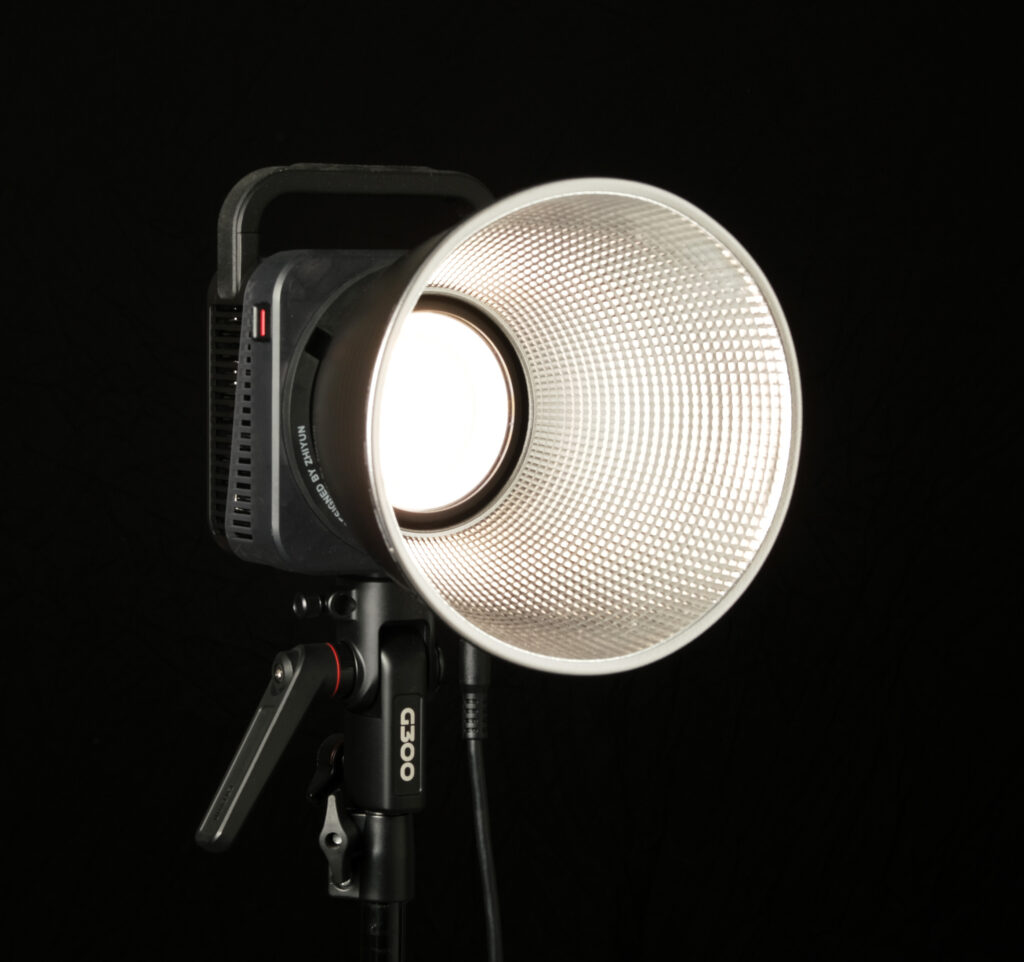
Now compact, of course, is a relative term. Is it more compact than a flash, which is the usual choice for most still photographers (including myself) when we need something more than available light? No, not by far.
But continuous light (as opposed to flash, which is instantaneous) has its own advantages. And the Zhiyun Molus G300 is powerful – like, really powerful. So what can you do with such a light? Would it find a place in your photography (or videography) toolkit? The answer, as always, will depend on your own priorities, and the kind of photos and video you want to make.
In this review, based on a couple of months of testing – both at my makeshift “home studio” (a.k.a. living room) and “in the field” with a couple of dance companies – I will talk about my experiences and opinions about this light, to help you decide whether the Zhiyun Molus G300 might be for you.
Disclosure
Zhiyun kindly sent us the Zhiyun Molus G300 for review purposes, but I was not paid for this article, nor did Zhiyun have any input into its content. At the end of this article, I have included an affiliate link, as well as a 10% discount code for 35mmc readers. Should you purchase using that link, I will get a small percentage (and you will still get the discount).
In my articles, I always try to be honest and objective, but as with any review, you should try to form your own opinions based on the facts and image samples provided. If you have any questions or doubts, I’m happy to address them in the comments.
As noted later on in this review, LED lights are particularly useful for video. When Zhiyun contacted me about the review, I said I mainly take still photos, and I’m not a videographer. Nevertheless, they were happy for me to review it from a pure stills perspective. As it happens, in the past two months, I got into videography – partly thanks to this light. So I’ve included a couple of video samples as well. But the focus is still on photography applications.
Most of the photos and videos in this article were shot with a Fujifilm X-E4 and various lenses. The film photos were shot on a Minolta X-370s. Some of the BTS photos were shot on my phone. If you want more details about gear, feel free to ask me in comments.
With all that out of the way, let’s get down to the review!
What’s in the box
The Zhiyun Molus G300 comes in a cardboard box with a plastic carrying handle, and foam inserts to hold the different parts. The main parts are:
- The light itself
- A reflector
- A control unit
- AC power cable for connecting the control unit to the mains.
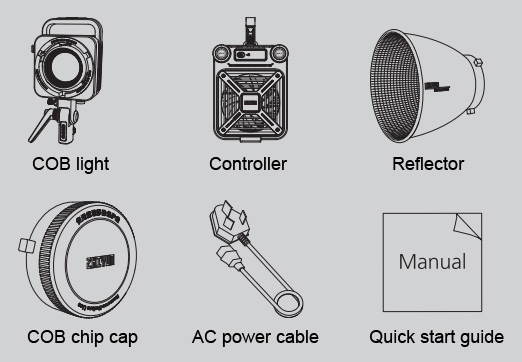
Speaking of power cables, as I mentioned earlier, the light needs to be plugged in – there’s no battery. If you want to use it outdoors or anywhere without a wall socket, you would need your own power supply. In Dale Campbell’s review, for example, he uses it with an Anker 555 power station. The upside is that the light delivers a lot of power – in his review, Campbell uses two Molus G300s to light up a whole treeline and part of a hill.
The photos below show the light with and without the reflector:
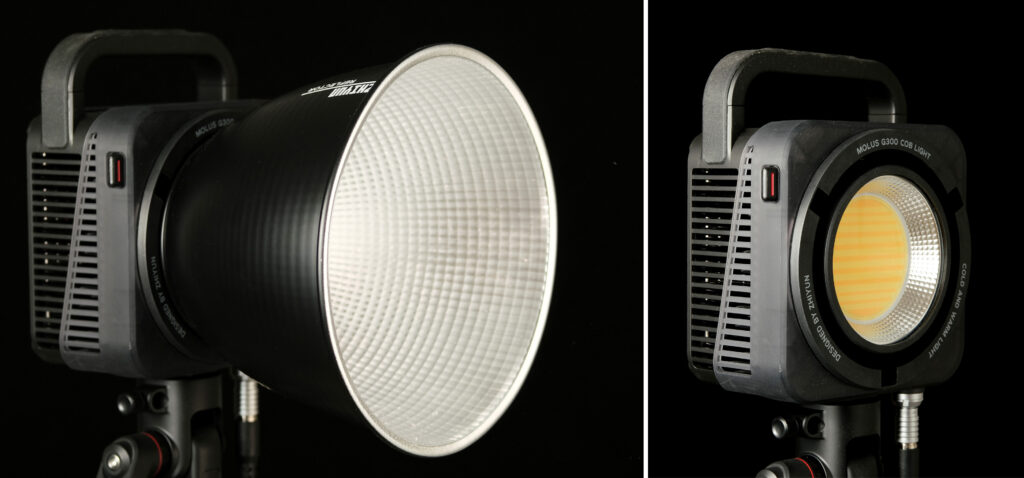
The next image shows the control unit, and a diagram (from the user manual) showing how the light and control unit are typically mounted on a stand:

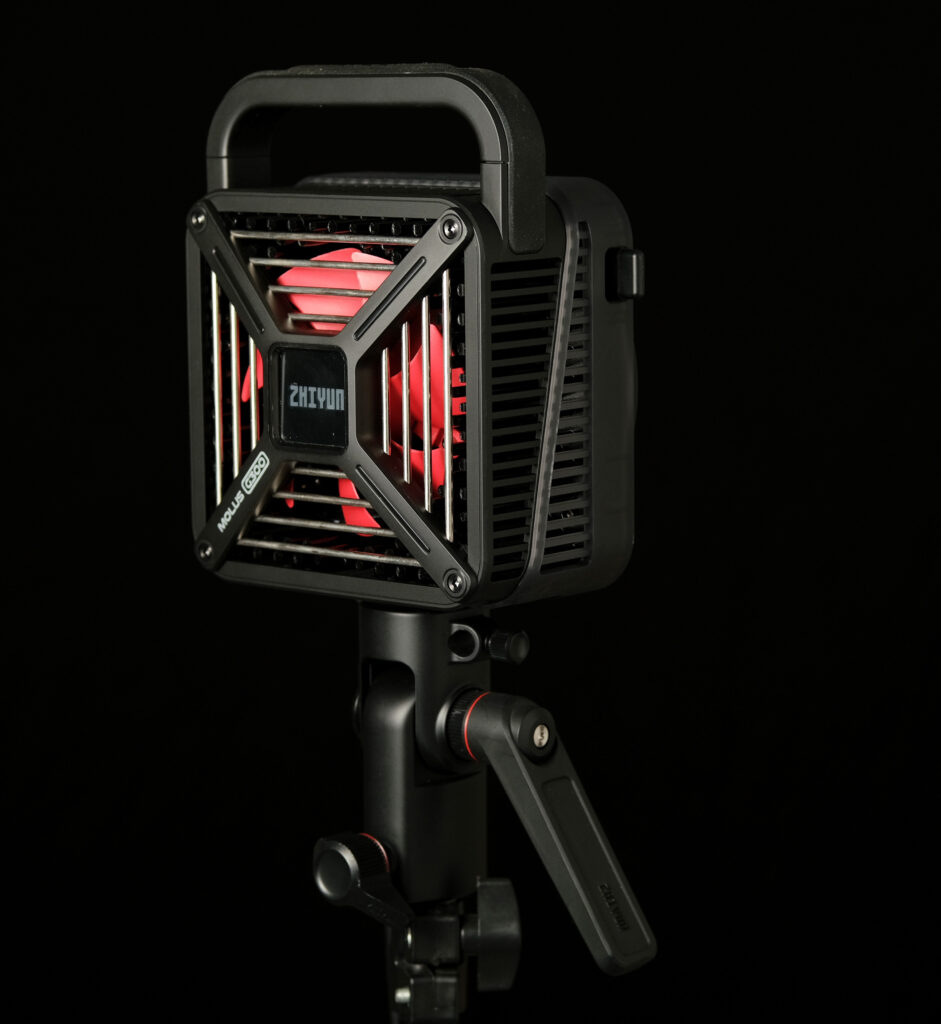 Specs
Specs
The following specs are taken from the Zhiyun website:
| Normal Mode | 300W |
| Overclocked Mode | 500W |
| Cooling Method | Active Cooling |
| Power Adapter Operation Voltage | 100~240V AC / 50~60Hz / 6.5~4A |
| Color Temperature Range | 2700K–6500K |
| Dimming Range | 0–100% |
| CRI (Color Rendering Index) | ≥95 |
| Illuminance (CCT mode, with/without reflector) | 61,000/15,500 lux |
| Illuminance (Max mode, with/without reflector) | 81,100/20,300 lux |
| Operation Temperature | -10℃ to 40℃ |
| Control Method | Controller device or Bluetooth (app) |
| Light Size (with bracket) | 148×259×84mm (W×D×H) |
| Controller Size | 128×164×73mm (W×D×H) |
| Net Weight (without reflector) | 2.8 kg |
Build quality and handling
The Zhiyun Molus G300 is mostly high-quality plastic, while some parts like the fans, grilles, heat sinks and reflector are made of metal. I believe some competing products (e.g. the Aputure LS 300d) have all-metal construction – I haven’t used them myself, but metal is potentially more robust. On the other hand, those products are much more expensive. To me, the Zhiyun’s plastic feels reassuringly sturdy. It is also lighter, and doesn’t heat up as much as metal.
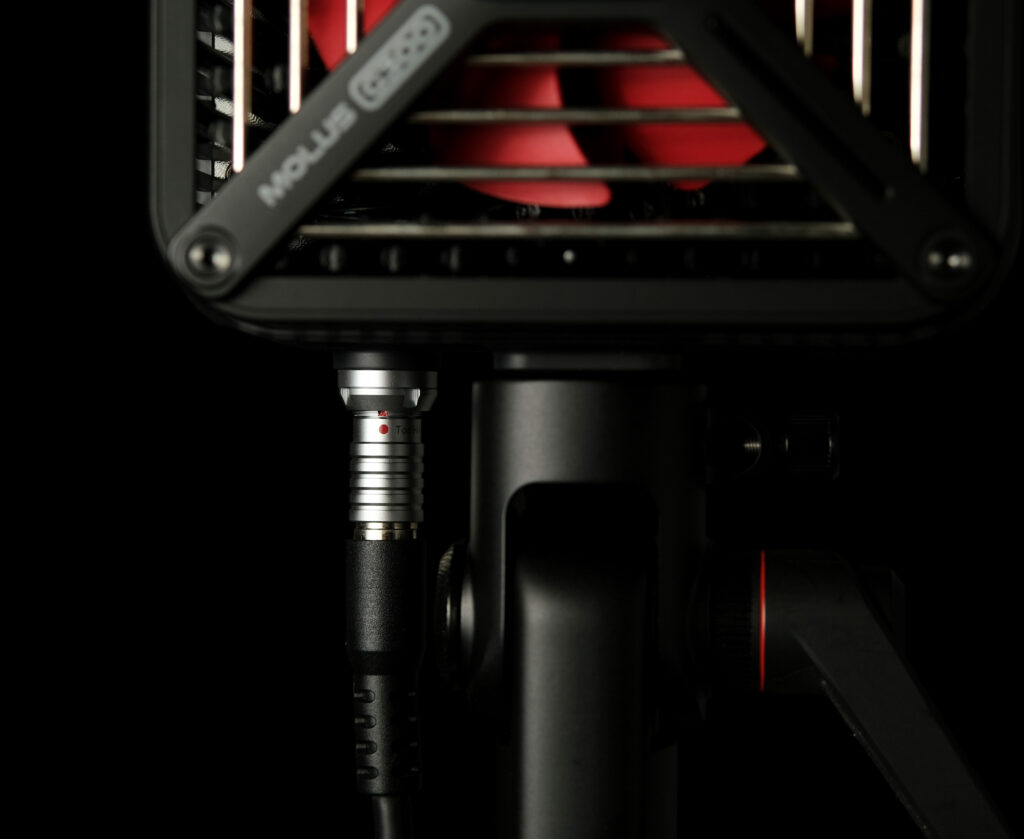
When it comes to design, there are a number of thoughtful touches. The control unit is separate from the light, with the two being connected by a 3m-long cable. This means that even if the light is mounted higher up, the control unit can be positioned at a more accessible height. The AC cable is even longer (4.5m), for a combined maximum distance of 7.5m from power socket to light. In all my shoots so far, I have managed without an extension cord.
The control-unit cable plugs into the light via an aviation interface, which feels like a premium touch.
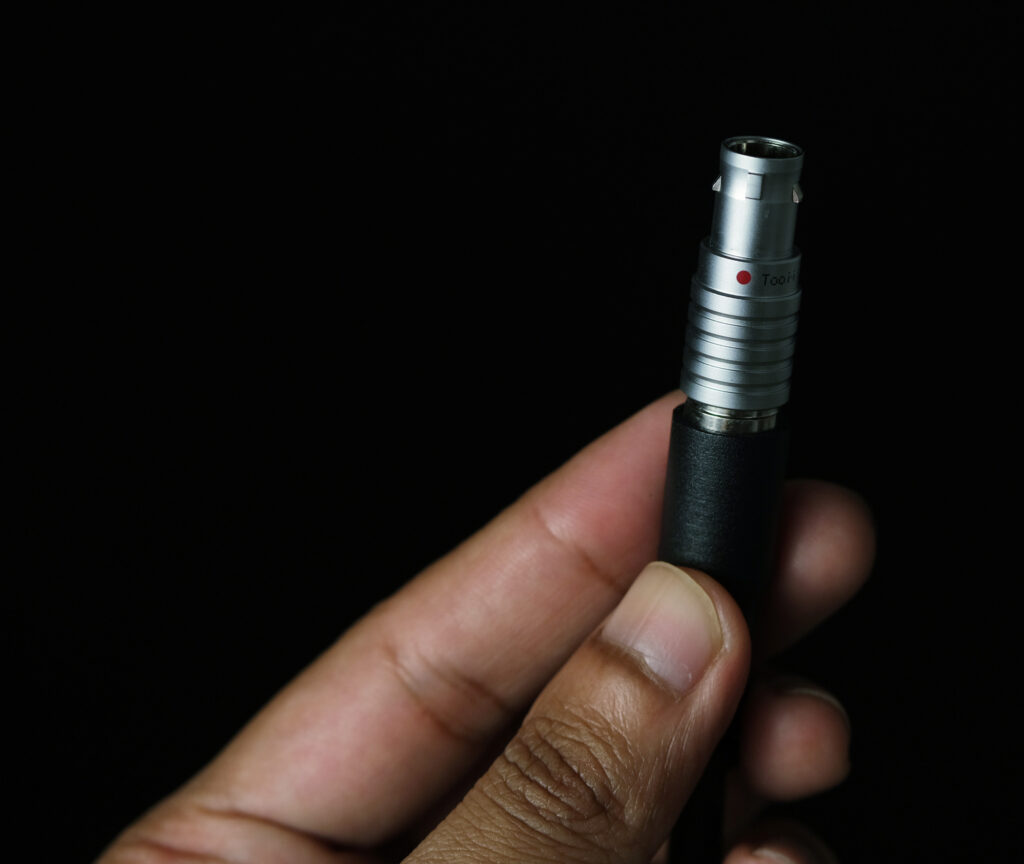
The control unit has a strap, which I often use to hang it from a light-stand. And it also has rubber pads, which means it won’t slide around if you place it on a surface.
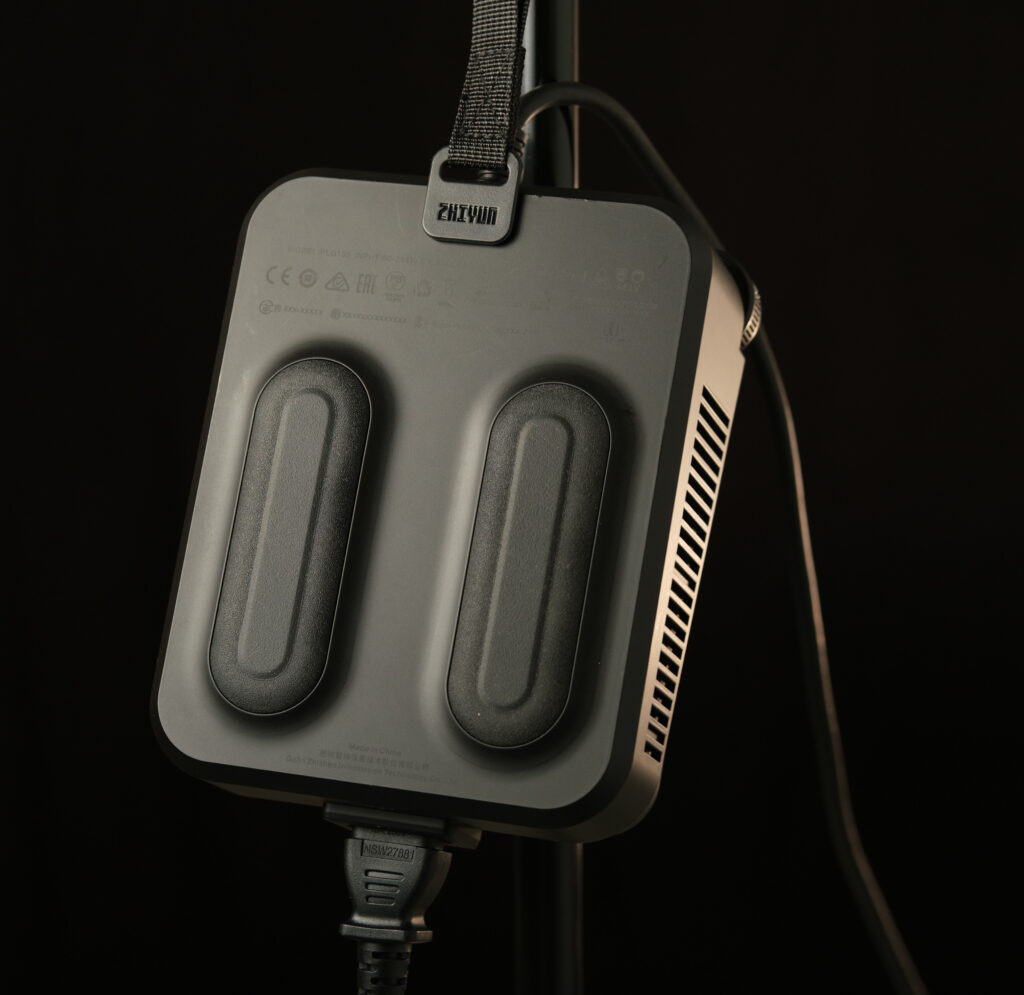
Unlike the Molus G200 which was released last year, the G300’s light unit has a handle on top, which makes it easy to carry and adjust (e.g. tilting up or down, when it’s on a stand). The light unit has an attached bracket (heavy-duty alloy, I believe) for mounting on a stand. The bracket is hinged, so it can bend 180° to point straight up or down.
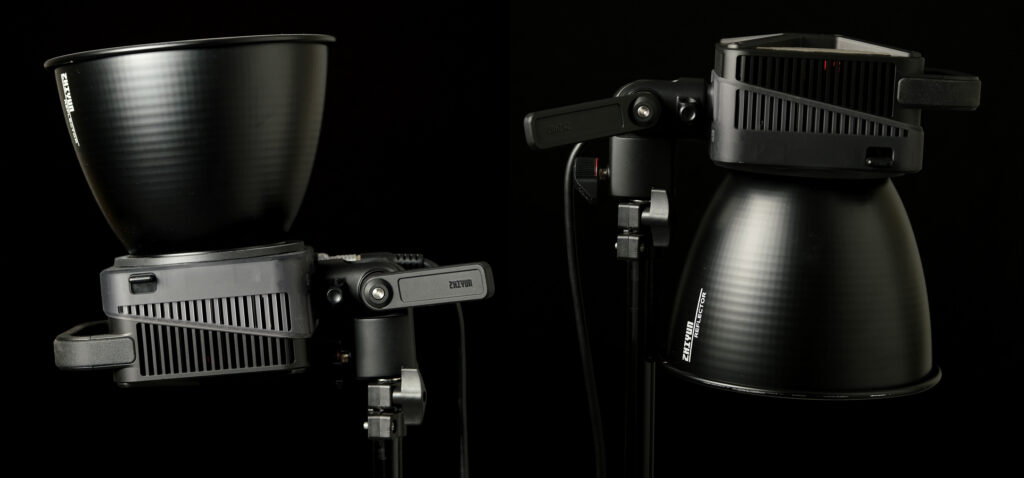
The bracket also has an hole for umbrella-type modifiers (see below), while the light itself has an industry-standard Bowens mount, which can be used for mounting the included reflector as well as a wide range of other modifiers.
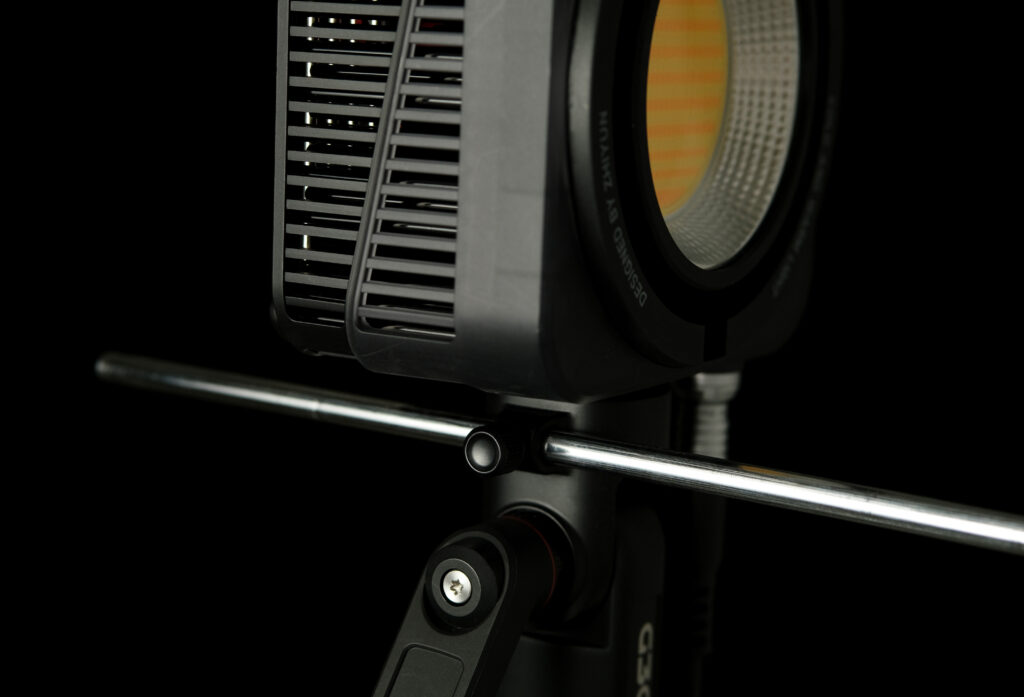
Size and weight are crucial factors when it comes to handling, and here, the Molus G300 has an edge over most, if not all its competitors. The professional-grade Aputure 300D, for example – which is much bigger and 1.5x the price – maxes out at 11,000 lux, while the Molus G300 goes to 15,500 lux (both at 1 metre). (These figures are from the manufacturers’ spec sheets; I haven’t measured them myself). Moreover, the Aputure 300D is fixed at 5600K, while the Molus G300 has adjustable colour temperature. But of course, you can’t have everything – the Aputure has weather-proofing and all-metal build, which may be useful in more challenging environments.
Controls
The controls are extremely simple. The control unit (see below) has an On/Off switch, and two dials for Power and Colour temperature (CCT). We can set these by (a) turning the dials, or (b) pressing the dials, which changes power and CCT in larger increments. These are the controls most of us will need for the vast majority of situations.
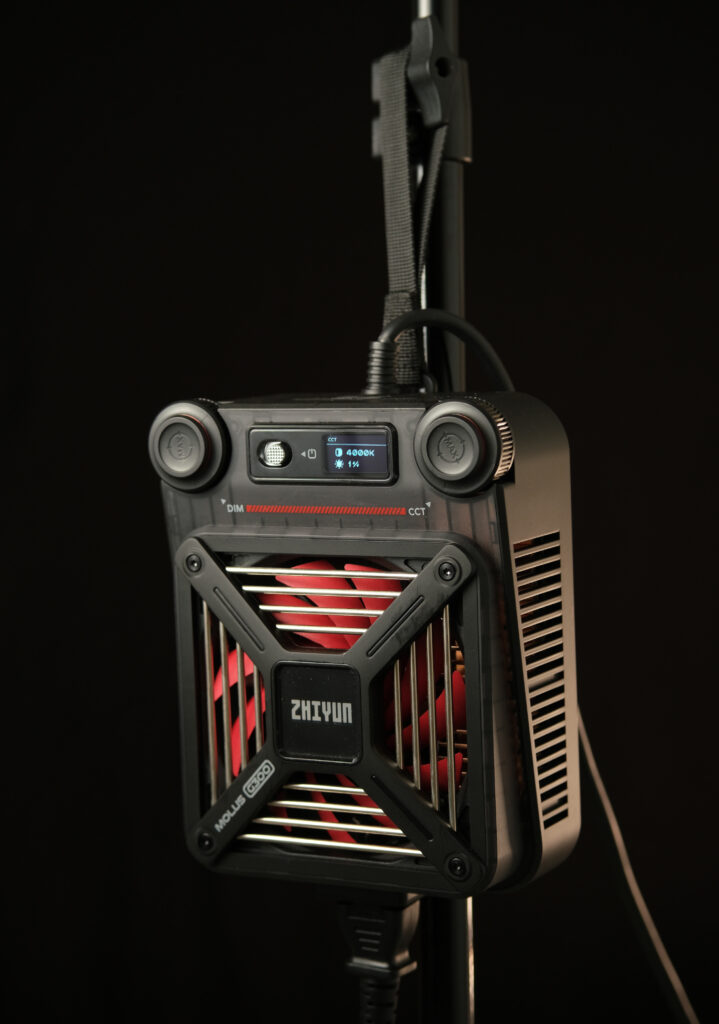
The dials and switches have pleasant tactile feedback. Long-pressing the Power dial takes us into the main menu, for Language options (English and Mandarin on my model) and Bluetooth reset (for app control). Long-pressing the CCT dial takes us into the FX menu, which has 14 different effects such as fire, faulty bulb, explosion, TV, and even a mode where the light is responsive to music. We can also change the brightness, speed and color temperature of each effect.
Pressing the Power and CCT dials simultaneously activates overclock mode (somewhat dramatically called “MAX Extreme Mode”) which takes it from the rated 300W to 500W.
Since I mentioned app control, I should say that the brightness and colour temperature can be controlled with the ZY Vega app. I tried this out and it seems to work just fine. In practice I tend to use the physical dials, but if the light is placed some distance away and needs to be adjusted frequently, I can see how the app might be helpful.

Light: power, colour temperature and quality
The Zhiyun Molus G300 is a 300W light, which is way more power than you need for, say, typical studio portraiture. For example, the photo below of my friend Pearl was shot at ISO 160, f/5 and 1/200 sec, with the light at only 5% power! And this despite the fact that it was in a softbox, which cuts a couple of stops of light.
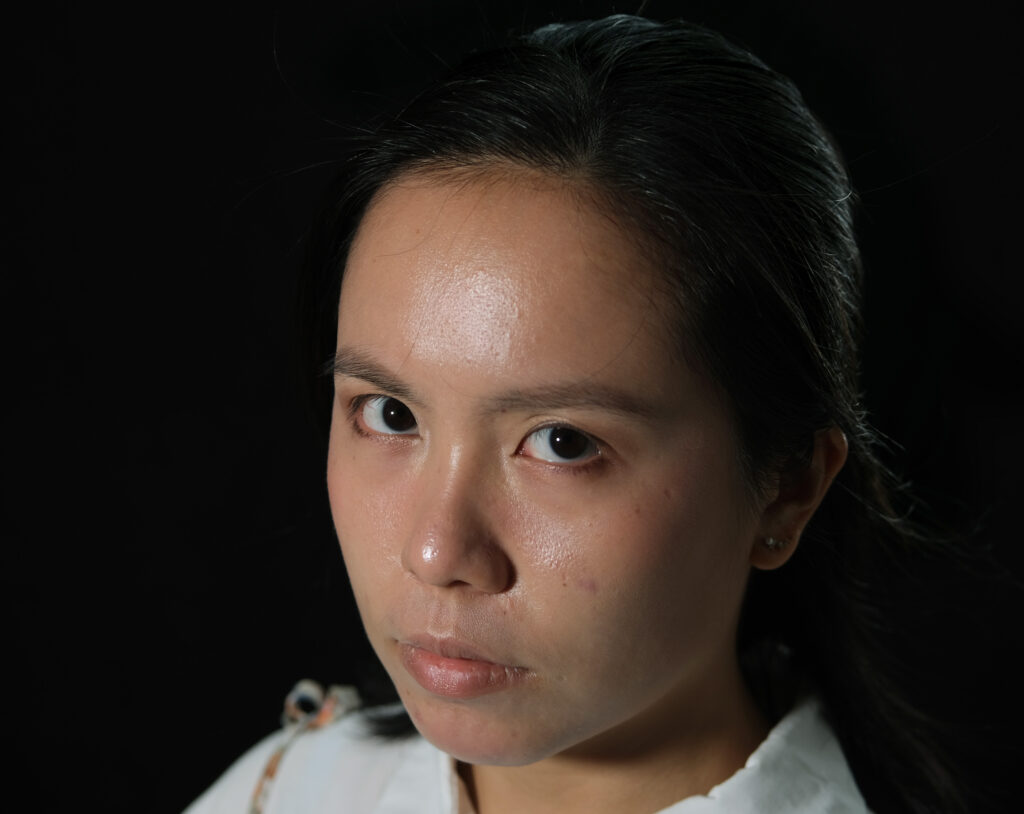
The light has adjustable power from 0-100% at 1% increments, plus an overclock mode, as I mentioned earlier. The two photos below are a good example of just how powerful this is.
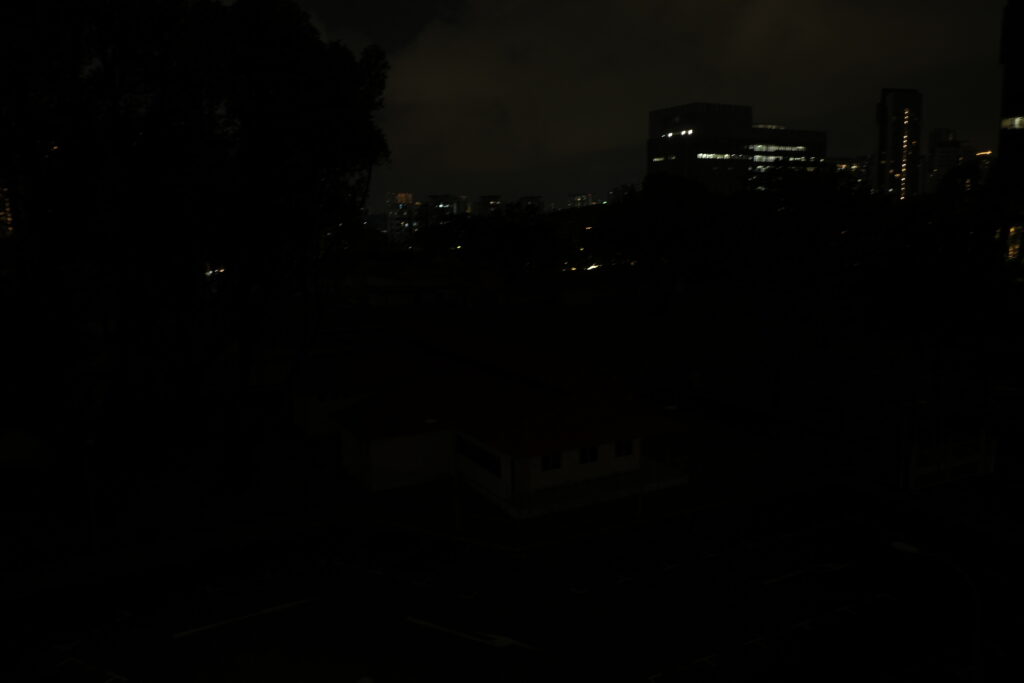
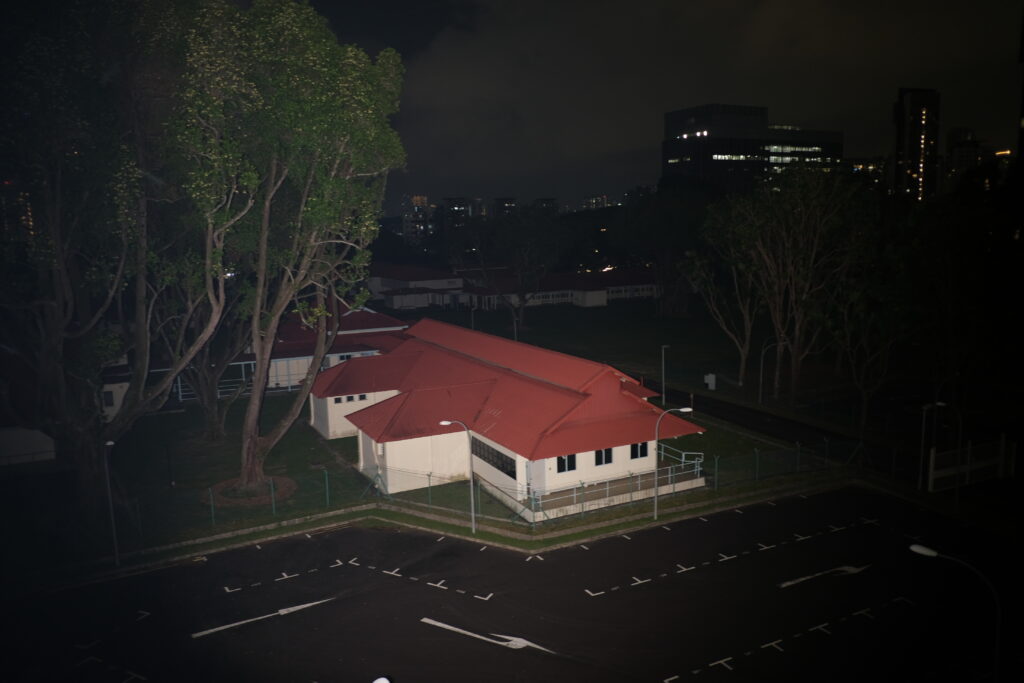 The photos are straight out of camera, taken from my 4th floor bedroom window (!) with identical settings (ISO 320, f/2, 1/15 sec). The first photo was with the light switched off, and the second was on overclock mode with the included reflector.
The photos are straight out of camera, taken from my 4th floor bedroom window (!) with identical settings (ISO 320, f/2, 1/15 sec). The first photo was with the light switched off, and the second was on overclock mode with the included reflector.
Even at a modest ISO 320, the Zhiyun Molus G300 lights up the car park, the buildings in the foreground, and even some of the buildings on the other side of the field. If I wanted even more illumination, I could have easily bumped up the ISO or lowered the shutter speed. This thing is like a floodlight.
The Molus G300 has a temperature sensor, so the fan automatically turns on when necessary. If it gets even hotter (for example, if you use it on overclock mode for an hour or more), the high-temperature protection mechanism is triggered, which turns the light off. Once the temperature decreases, the light will automatically turn on again. However, I did not experience this, even when using the light at over 50% power for over an hour.
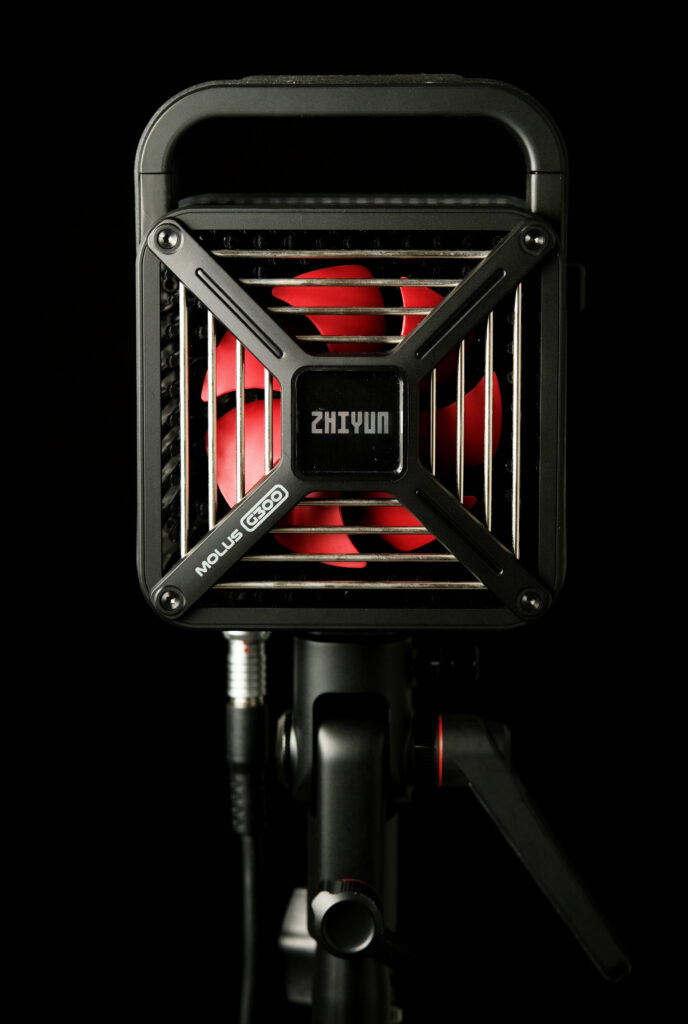
The fan is not noisy, but not completely silent either. If you’re shooting video, it can be an issue if your microphone is a couple of meters from the light. But any more than that, the noise shouldn’t be a problem.
The light has adjustable colour temperature, ranging from 2700–6500K. In the photos below, C is the White Balance setting on my camera, and L shows the colour temperature of the light which I used to illuminate the papier-mâché cat (the background, of course, is ambient light).
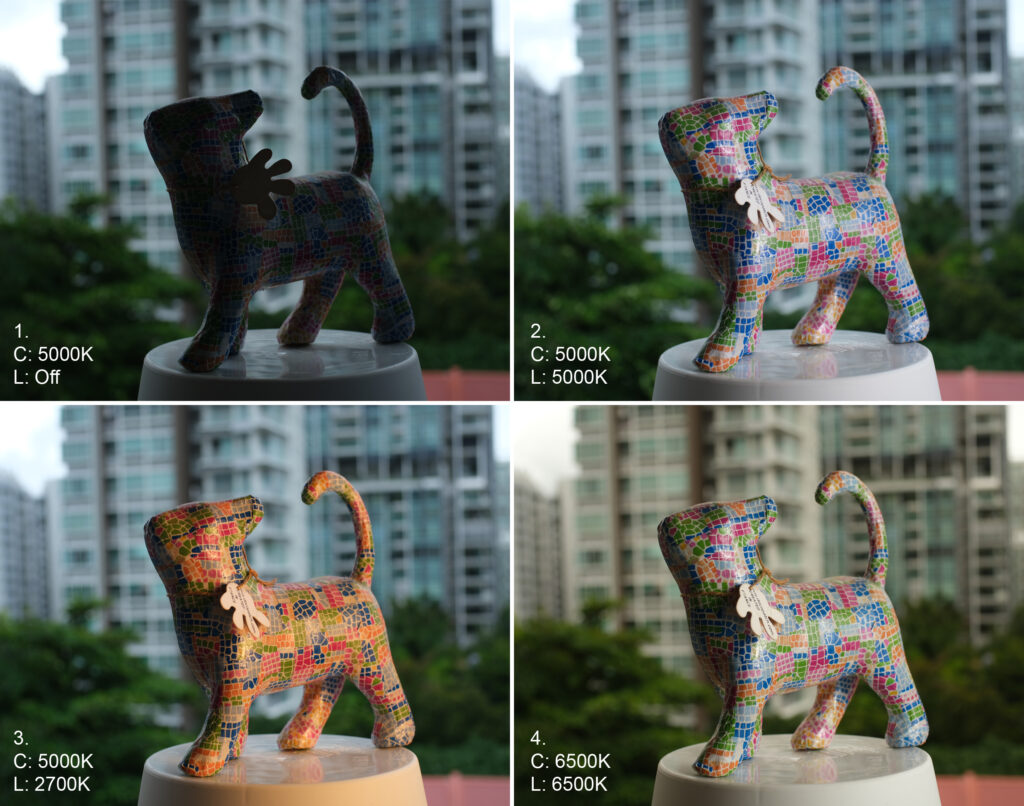
(1) shows how it looks in natural light, with C (camera white balance) set to 5000K, which is considered a neutral colour temperature.
For (2), I lit the cat with the Molus G300 and umbrella diffuser, placed on camera right. C and L were both set to 5000K.
In (3), C is still 5000K, so the background looks the same as before. But L is set to the lowest temperature (2700K), so the cat looks a lot warmer.
In (4), I set C to 6500K, to make the background look warmer. To match, I also changed L to 6500K. This, to my eye, produces a pleasing, natural and consistent look for both foreground and background.
The aesthetics of colour temperature are subjective, but 2700–6500K is a pretty wide range, so you should be able to tailor it to your needs. And if you want funkier colours, you can of course add on modifiers such as colour gels.
The “quality” of light is subjective too, but the three photos below should give you a sense of the spread and hardness.
First up, the light with no modifiers.
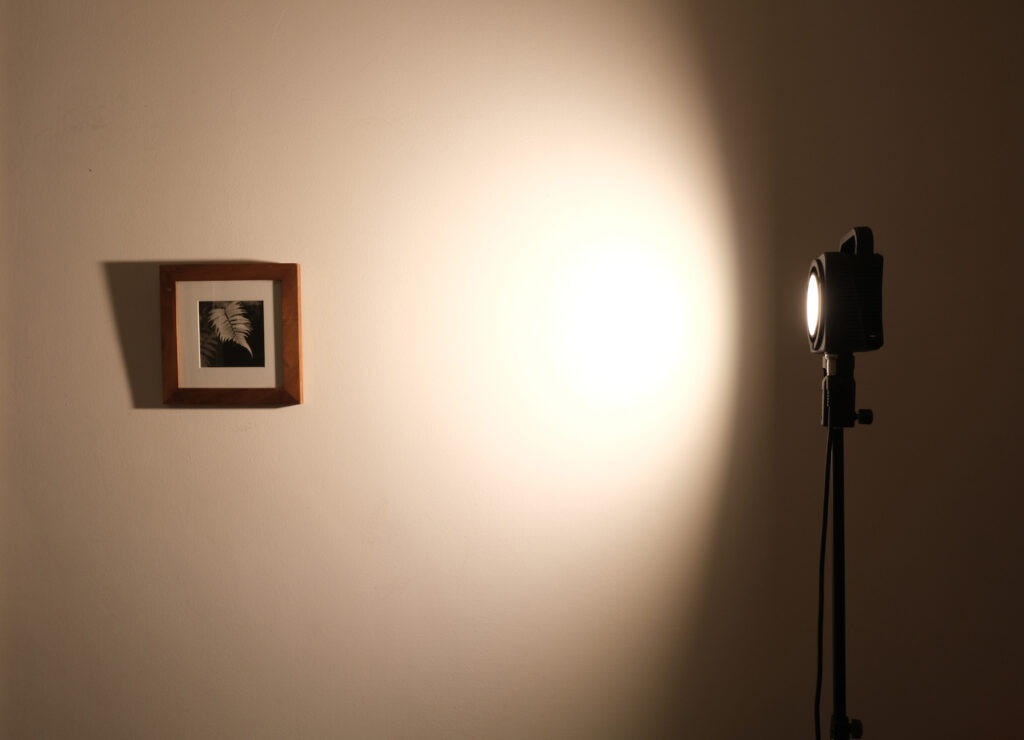
Next, with the included silver reflector. Up close, the spread is slightly narrower, but the light is concentrated and therefore more powerful.
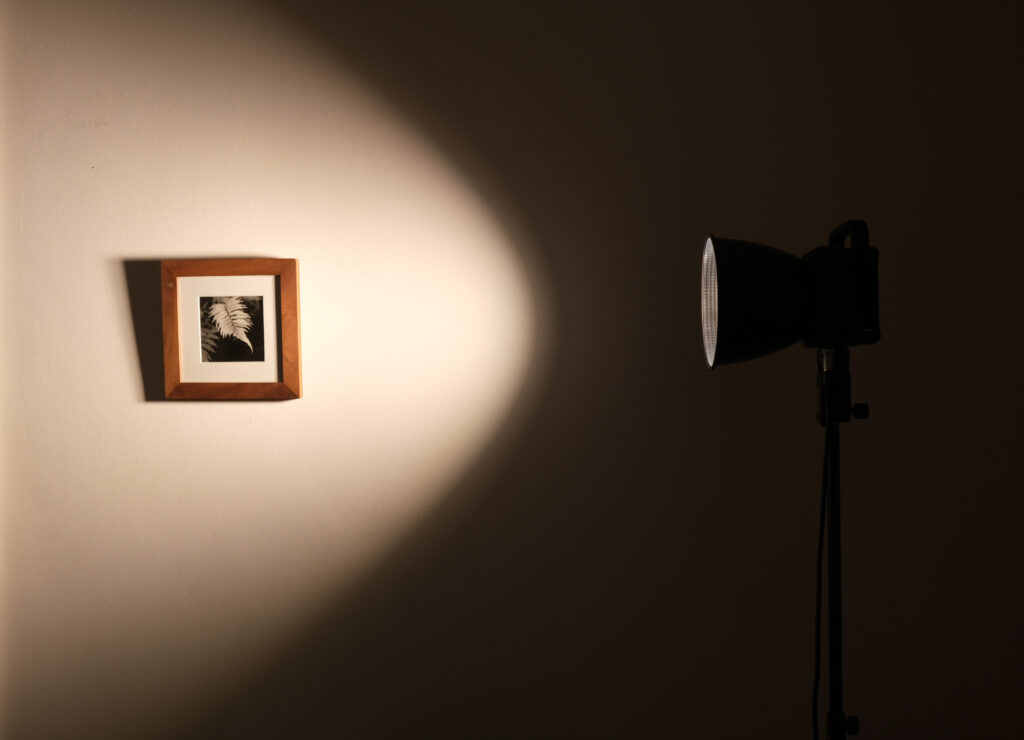
Finally (below), with a third-party octagonal softbox. The light is inside the softbox, pointed to the right, i.e. bouncing off the inner silver reflector. As you can see, the spread is very even, and the shadows (e.g. of the frame on the wall) are a lot softer.
As I mentioned, the Molus G300 has a Bowens mount, while the bracket has a hole for umbrella-type modifiers. In the setup above, I used the bracket-hole to mount a softbox with an umbrella shaft. This means the light is inside the softbox, which is not ideal for prolonged or high-powered use, because it limits the heat dissipation. For short-term use (30 mins or so), it was not a problem and did not cause the light to overheat. But for more demanding scenarios, I would recommend a Bowens-mount softbox, so that the light is not “trapped” inside.
Here I showed how the light behaves with a couple of the most common modifiers, but the Bowens mount allows for any number of other accessories. If you are into lighting, you can probably imagine how it would look with a beauty dish, grid, barn-doors and so on.
Portrait shoot
The photos below are with my friend Pearl, standing on my balcony in the late afternoon.
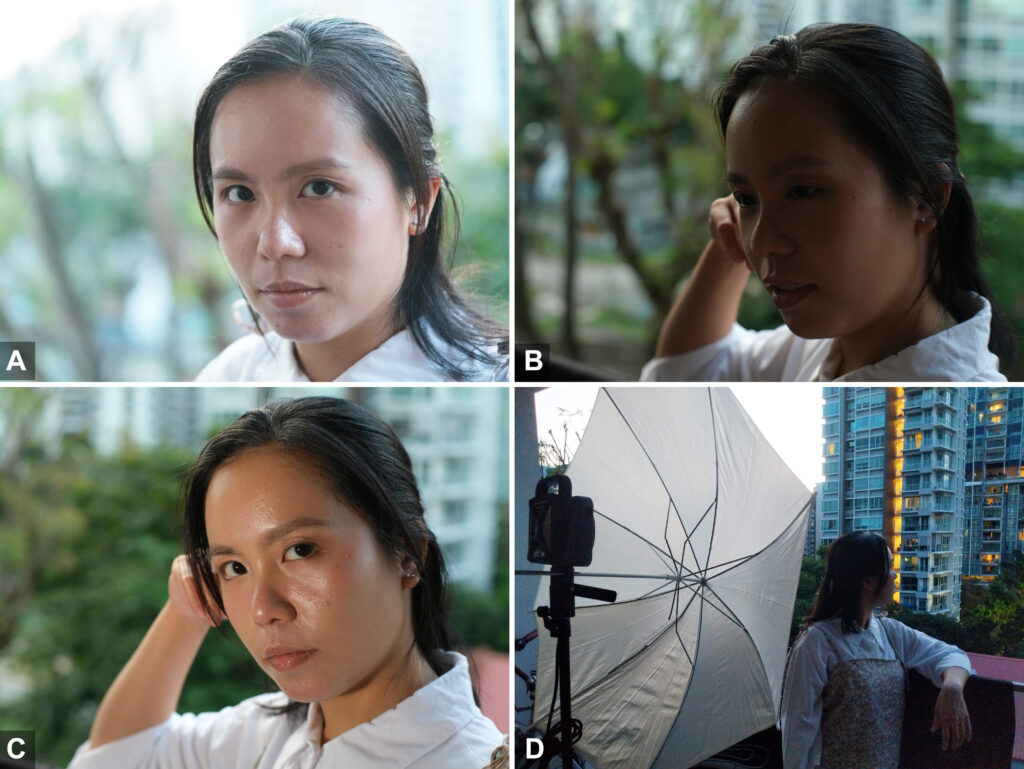
(A) and (B) are with natural light only. (A) has the right exposure for Pearl, but the background is blown out. In (B) I exposed for the background, but Pearl is underexposed.
(C) has the same exposure as (B), but I used the Molus G300 with a diffusion umbrella to light Pearl. (D) shows the behind-the-scenes (BTS) setup.
In the images below, I used the Molus G300 (with softbox) as a key light on camera left. The first photo shows the effect of the key light only. The shadows are a bit dark, but it looks kind of dramatic, if that’s the look you are going for. In the second photo, I used a second light, bounced off the ceiling, to add some fill. In the third photo, I added a third light as hair light to separate her from the background.
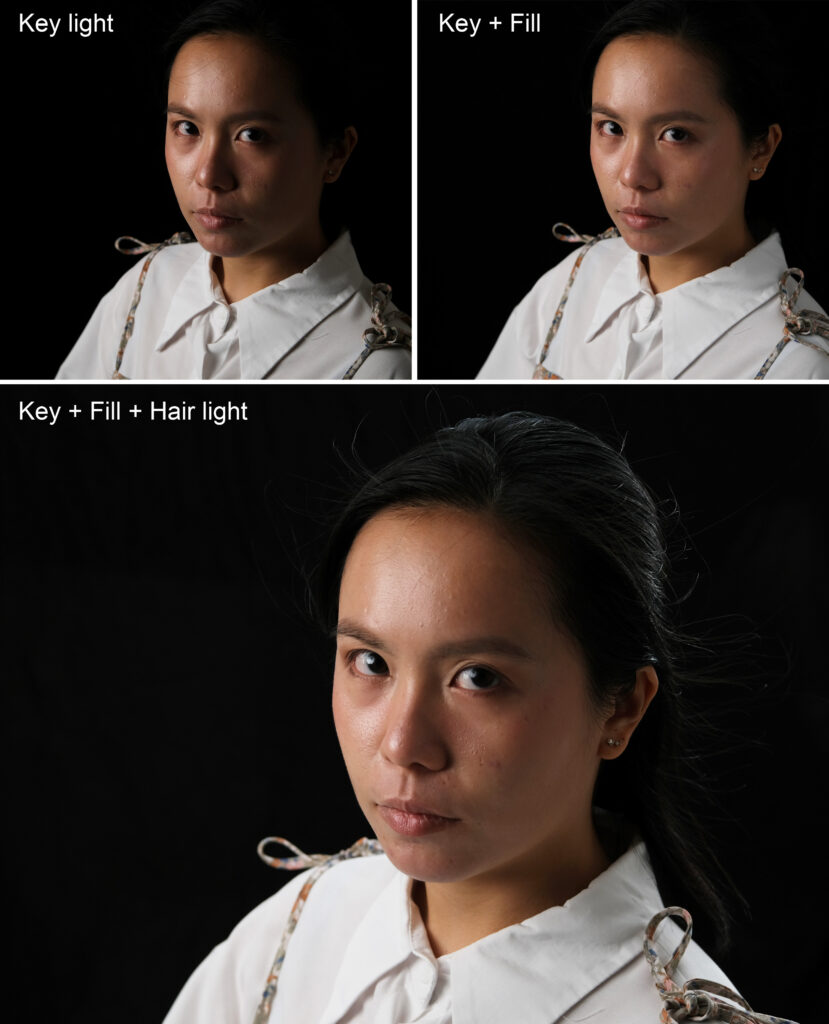
Contemporary dance: BTS stills and video
I used the Molus G300 to shoot some BTS/documentary footage for Sigma Contemporary Dance, a dance company here in Singapore, as they created and rehearsed for their latest production, Streams Where Deer Drink. The photo below shows how I set up the light in their studio space.
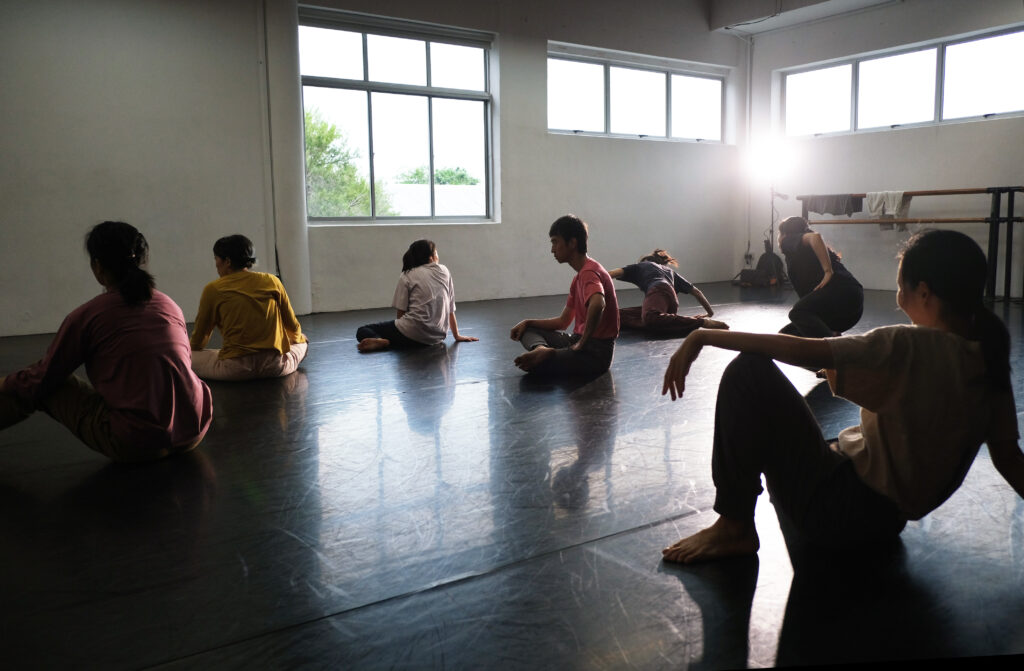
The light was fitted with the included silver reflector but no other modifier. The room lights were turned off, so the only other illumination was daylight from the windows.
The next two photos show a comparison with the same camera settings, lit by (a) daylight only and (b) with the Molus G300 on camera left.
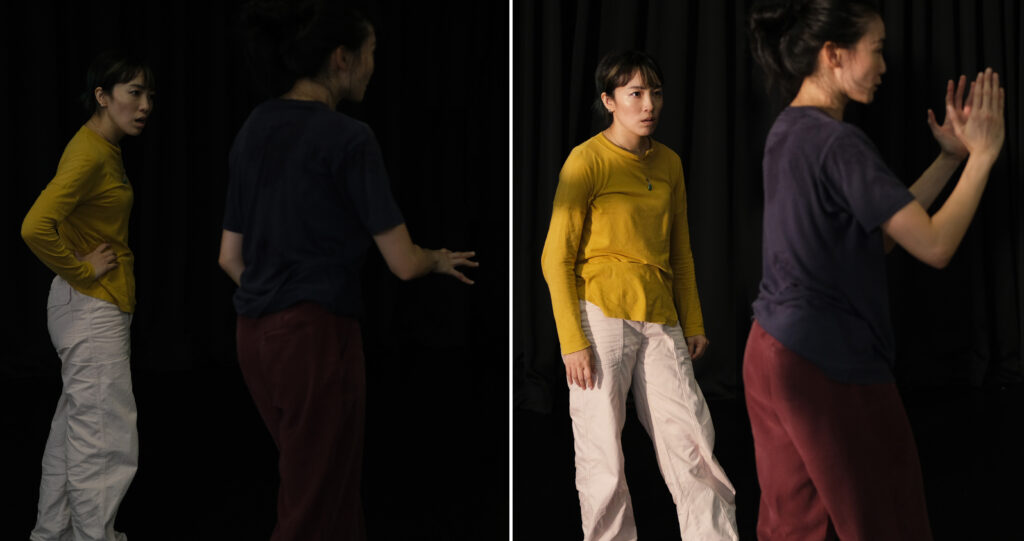
The light was at only 40% output, but it was powerful enough to not just light the whole studio, but to do so in a way that I could use a relatively low ISO (to minimise noise) and fast shutter speed (to freeze the dancers in motion). For example, my camera settings for the photos above were ISO 800, f/2 and 1/500 sec.
A few more rehearsal photos using the Molus G300:
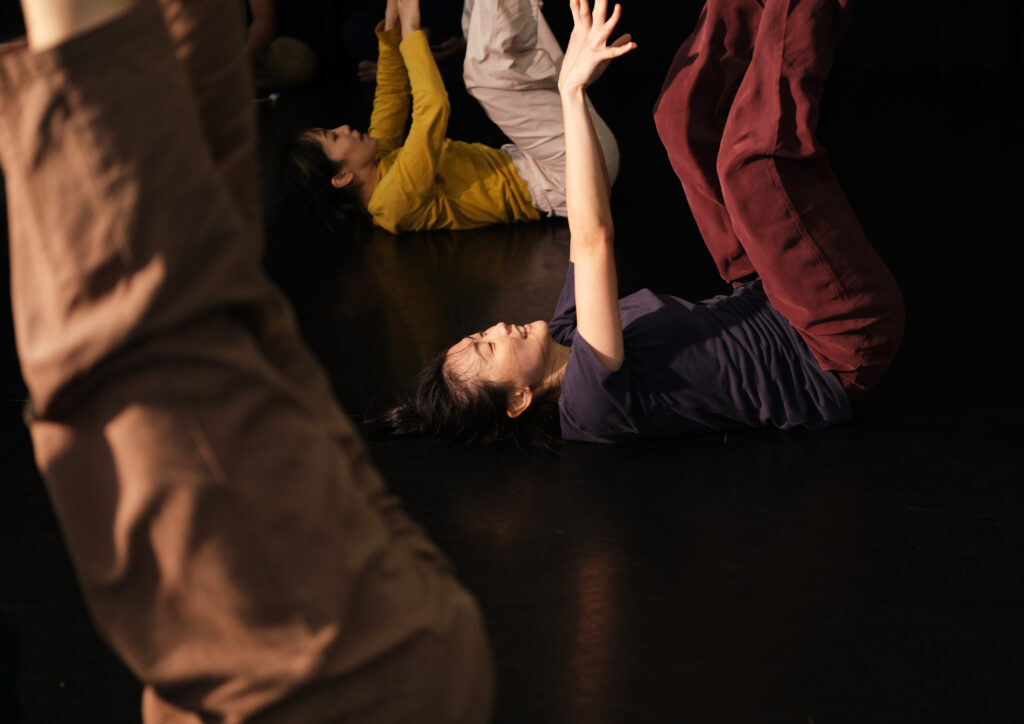
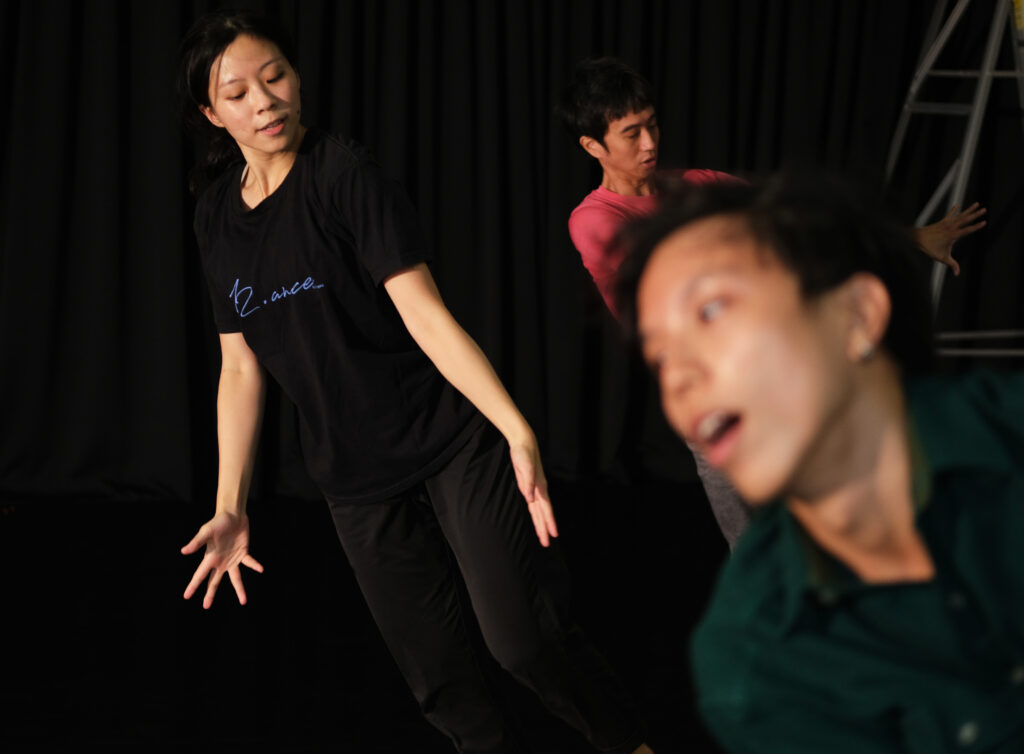
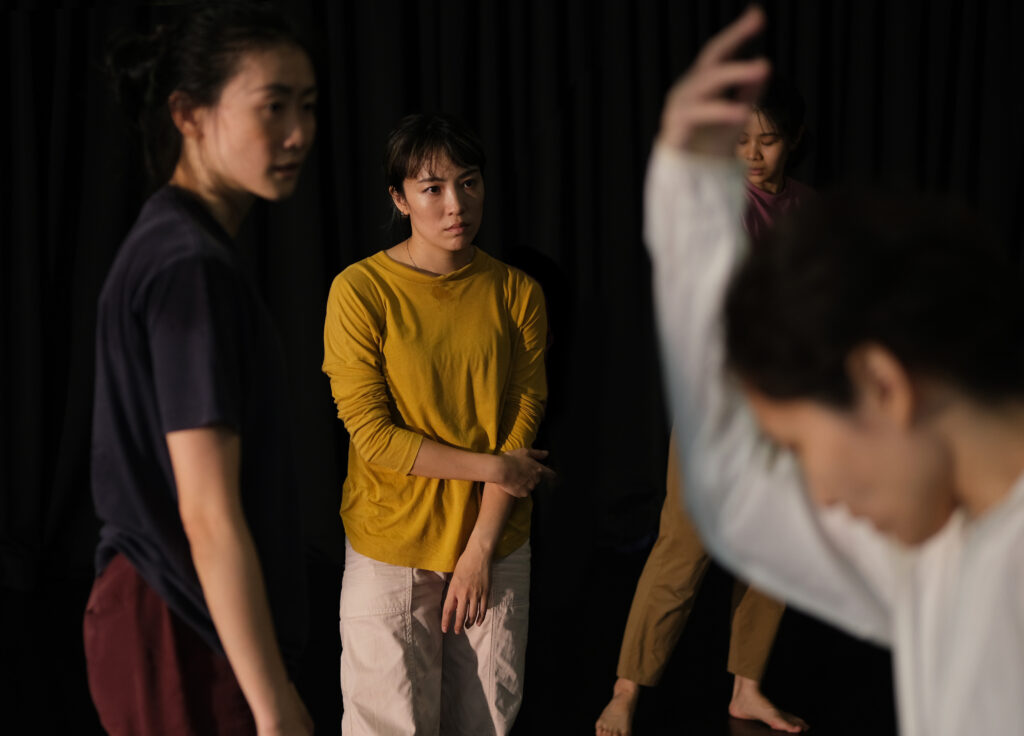
As I said, I set out to review the light from a still photography perspective, but I also shot a few video clips at rehearsals, and edited them into a short montage. Video footage really showcases what a continuous light like the Molus G300 can do, because there is no way to achieve this with flash.
In the first clip, you can see the light itself, used as a practical. The music is from the score for Streams Where Deer Drink, composed by Redwan Hamzah (used with permission).
Contemporary dance: publicity photos
Besides the BTS photos and video shown above, I also took some publicity shots for Streams Where Deer Drink. The photos below show my BTS setup. My key light was the Zhiyun Molus G300 in an octagonal softbox, on camera left. I also had a rim light on camera right – a strobe inside an improvised strip box.
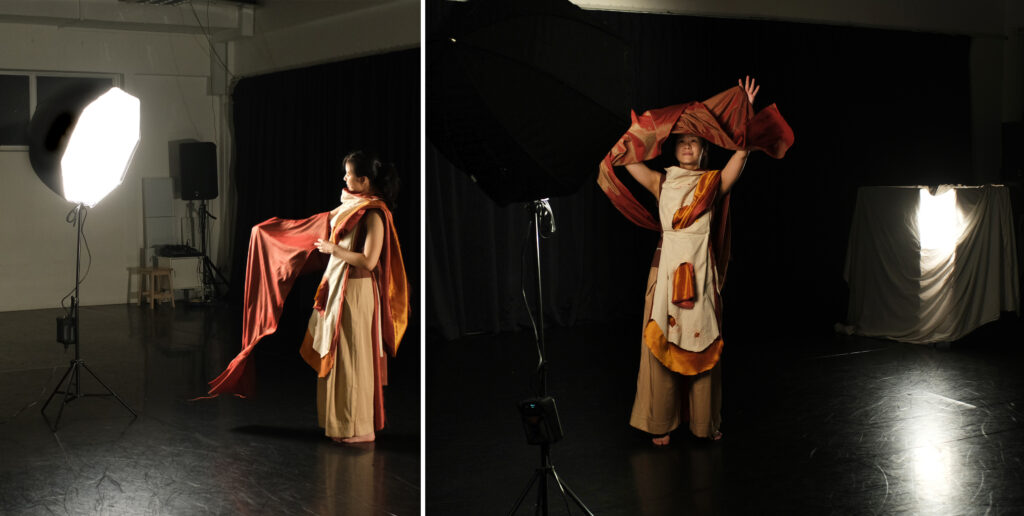
The photos below show the effect of (a) the key light only, (b) rim light only and (c) both.
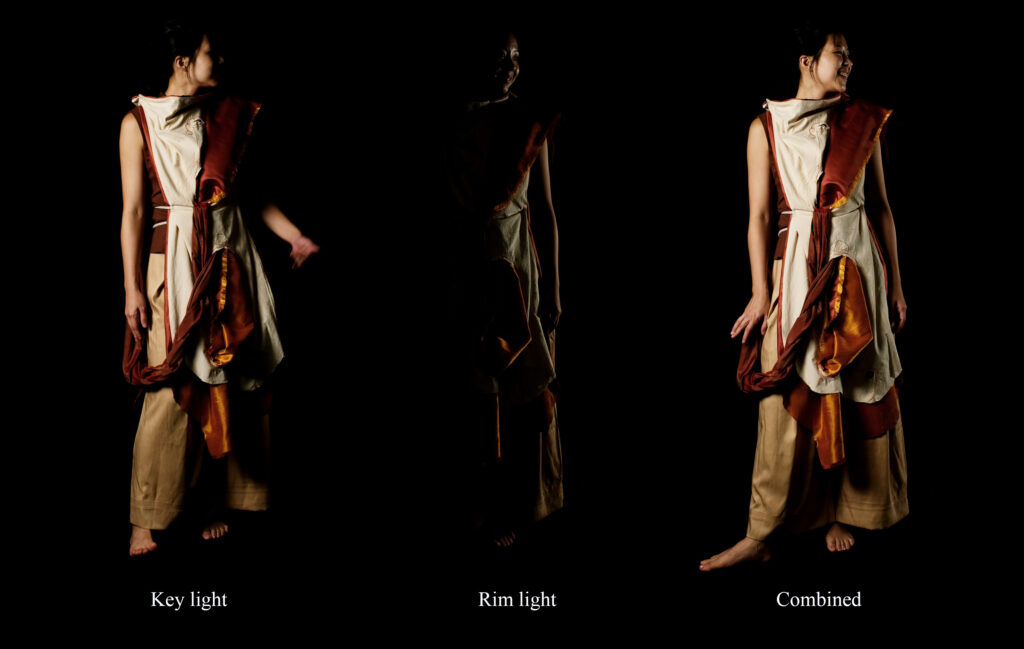
We used this setup to take individual photos of each dancer who is in the show. Here are a couple of examples:
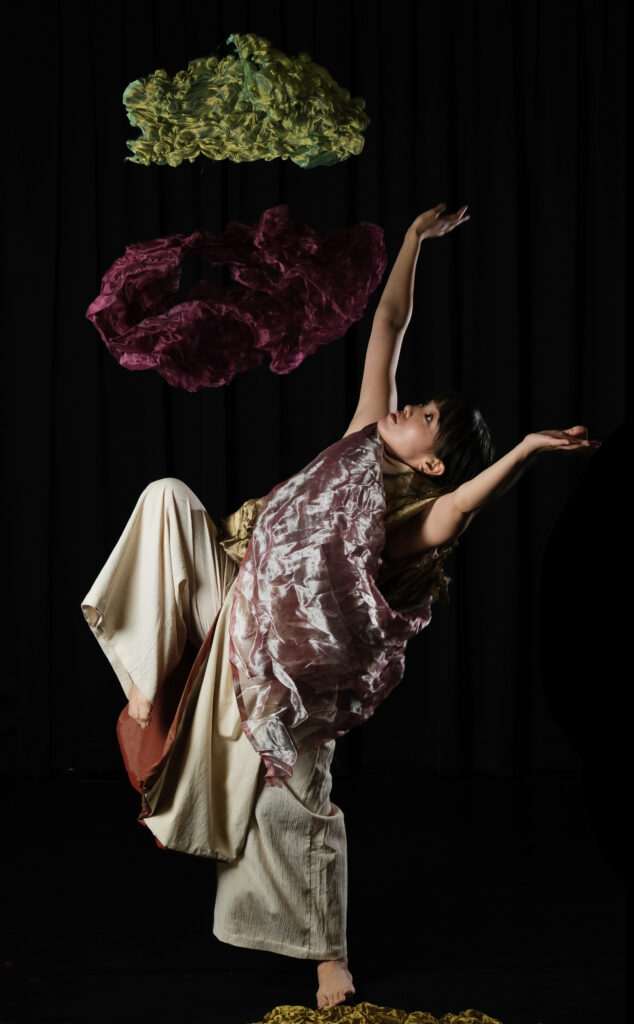
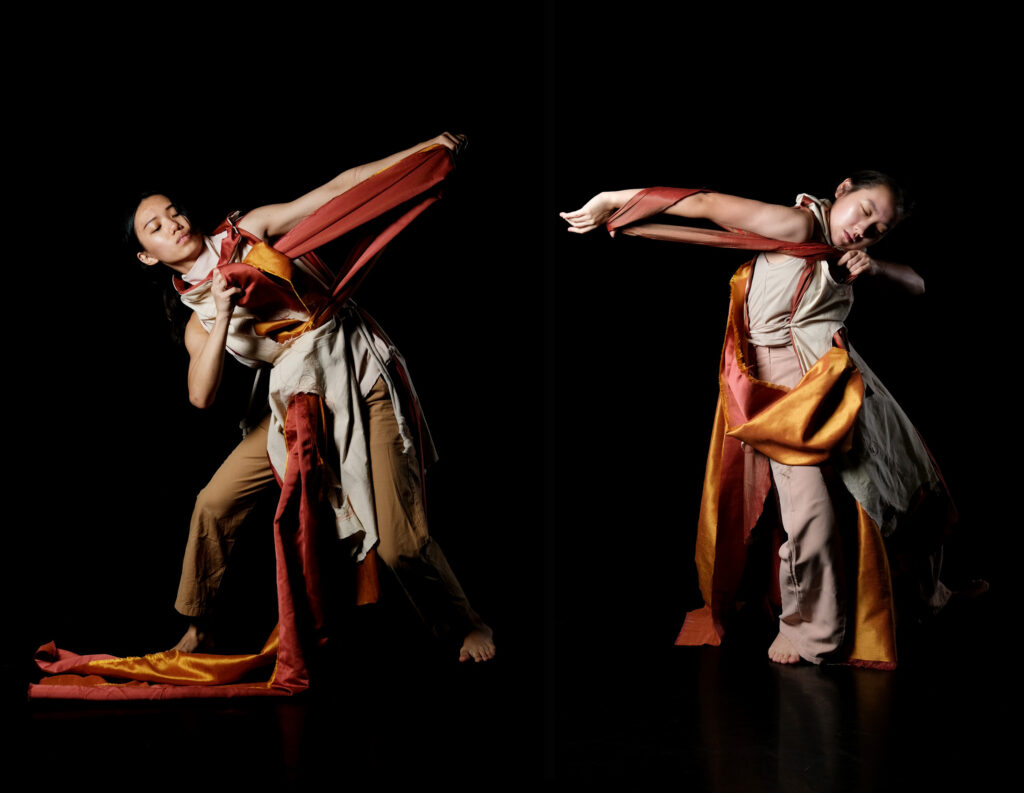
35mm film photos
The publicity shoot was, of course, on digital, but after we were done, I also took some photos on film.
Film photography is one area where continuous lights like the Molus G300 can be helpful. With digital, I often use trial-and-error to establish the desired flash exposure, but on film, that’s obviously not feasible. You can of course use flash meters, or TTL on more modern film cameras, but it still feels more unpredictable than using a constant light where you can see the effects with the naked eye. If your camera has a built-in meter, you can also rely on that.
The photos below were shot with my Minolta X-370S on Rollei Paul & Reinhold 640 ISO film, developed in Ilford ID-11.
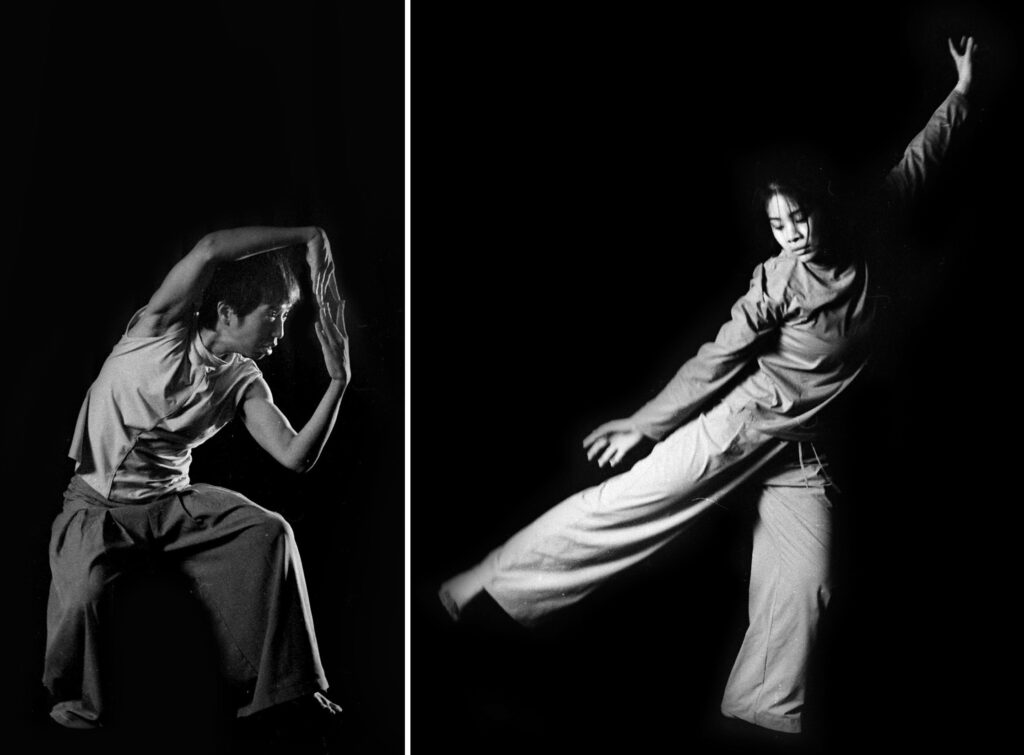
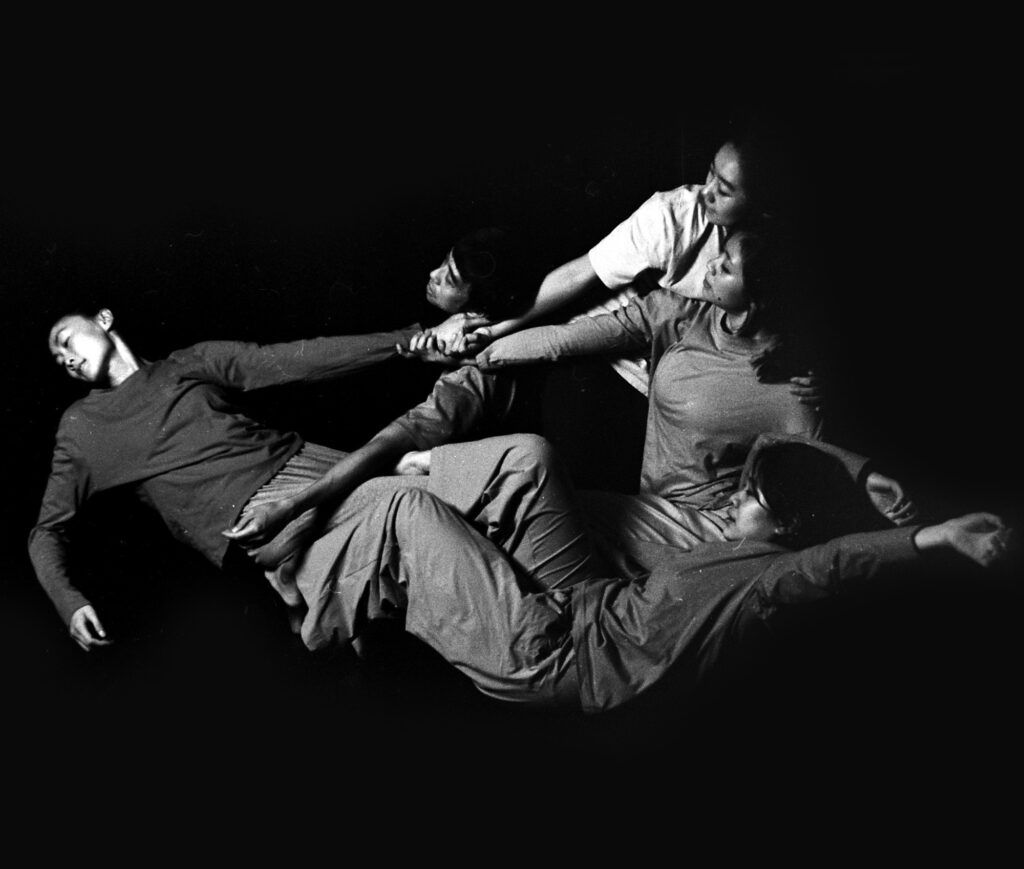
The next image shows six different film photos, stitched together in post:
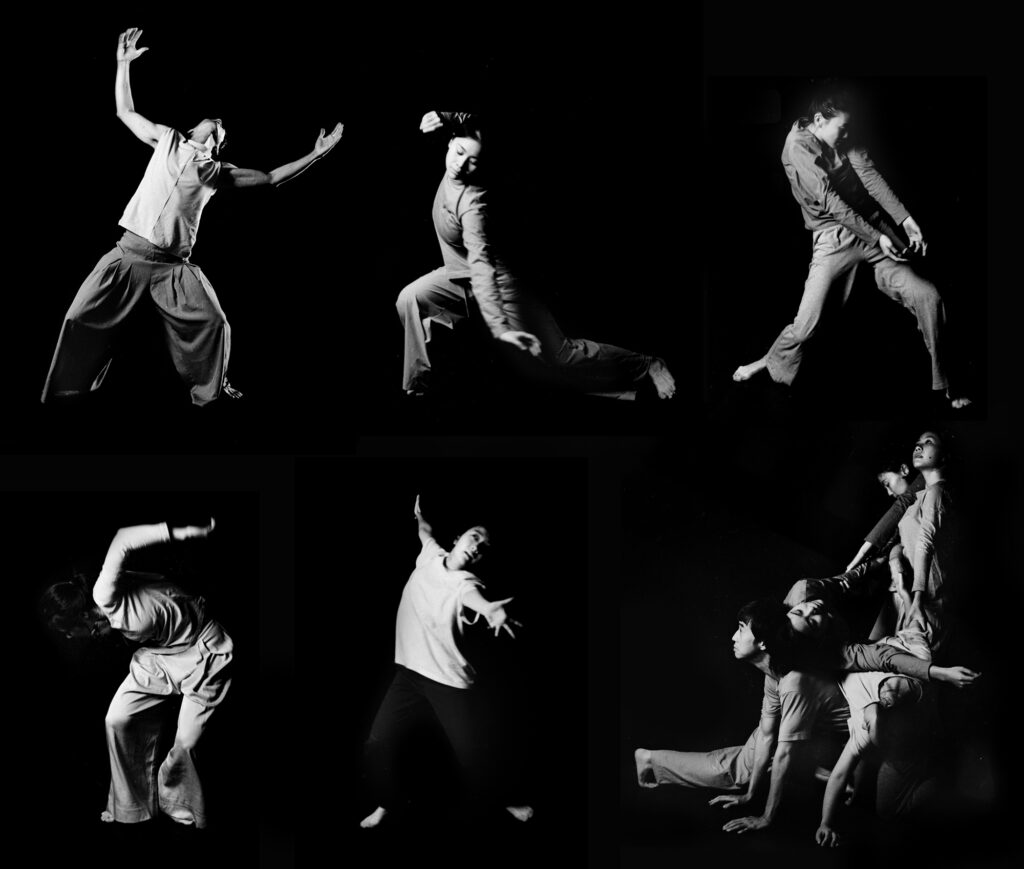
Aerial hoop: photos and video
The next few photos are from a collaboration with my friend Cherilyn, who does aerial hoop (among other things). The shoot was at Fable dance studio in Singapore, and I’d like to thank them too for letting us use their space.
The photo below shows the BTS setup, with the Molus G300 in a softbox on camera left. With minor variations, this is essentially what we used for the whole shoot.
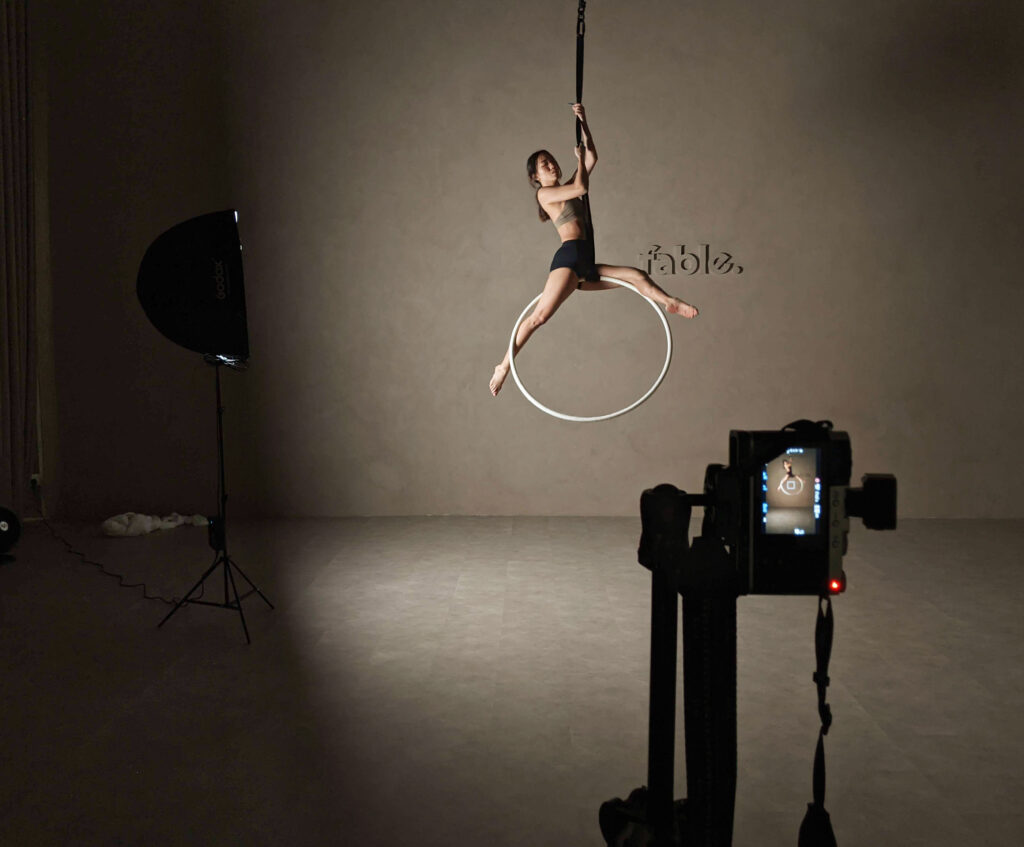
One advantage of a strong continuous light like the Molus G300 is being able to use fast shutter speeds to freeze motion. The photo below was shot at 1/1000 sec, despite the light being at only 50% power.
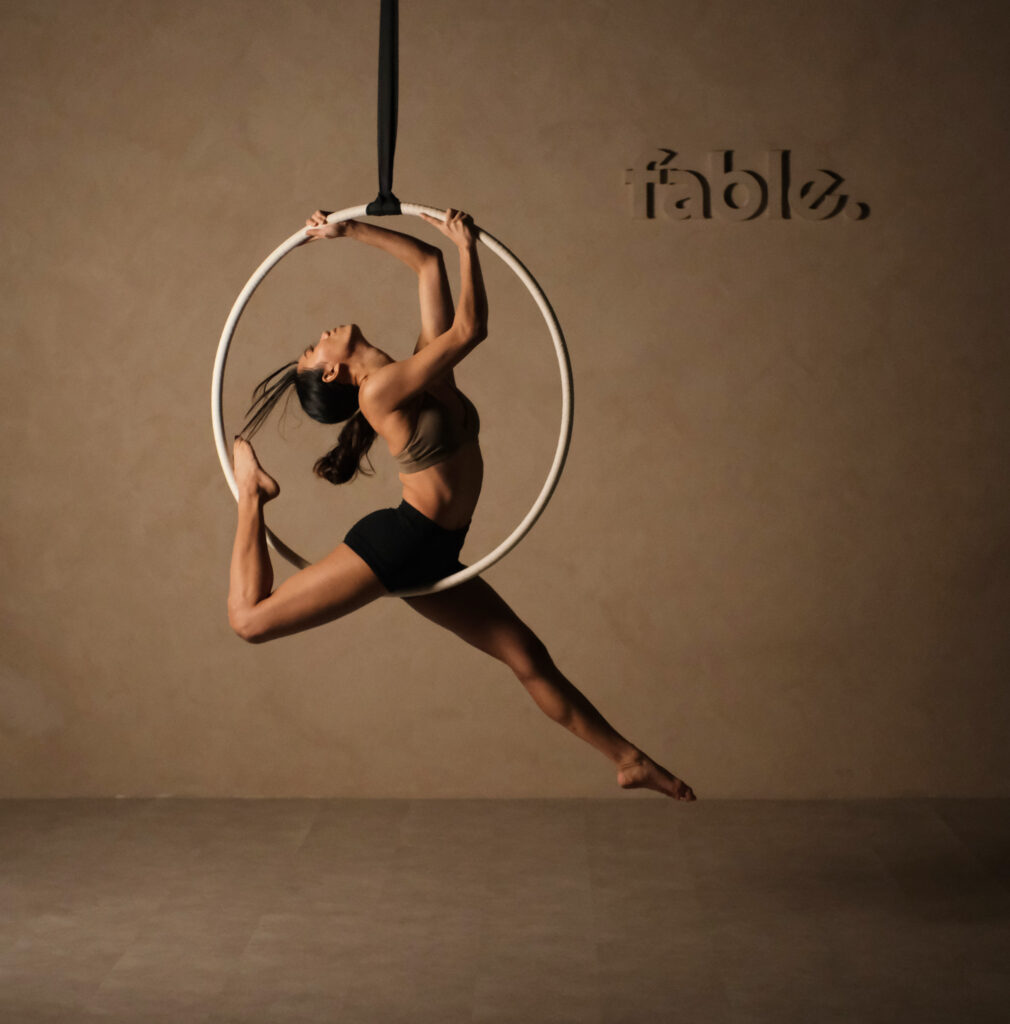
Another advantage is being able to use burst mode, as I did on the sequence below. Most strobes and speedlights can fire in burst mode too, but there are limitations to the number and frequency of flashes. With continuous light, the only limitation is the burst rate of your camera.
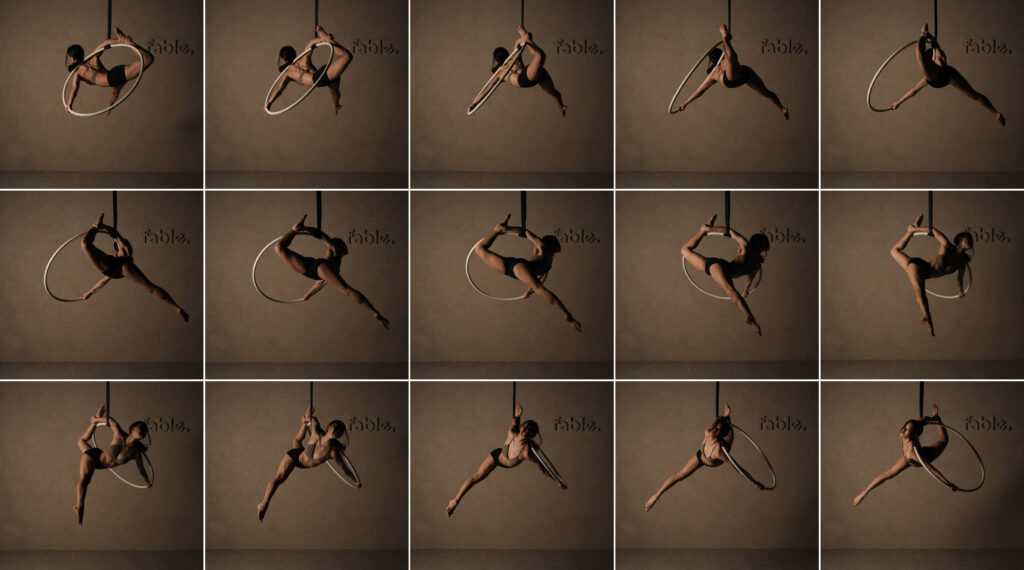
Fast shutter speeds are good for freezing motion, but motion blur can look artistic too. Again, this is something you can’t really get with flash.
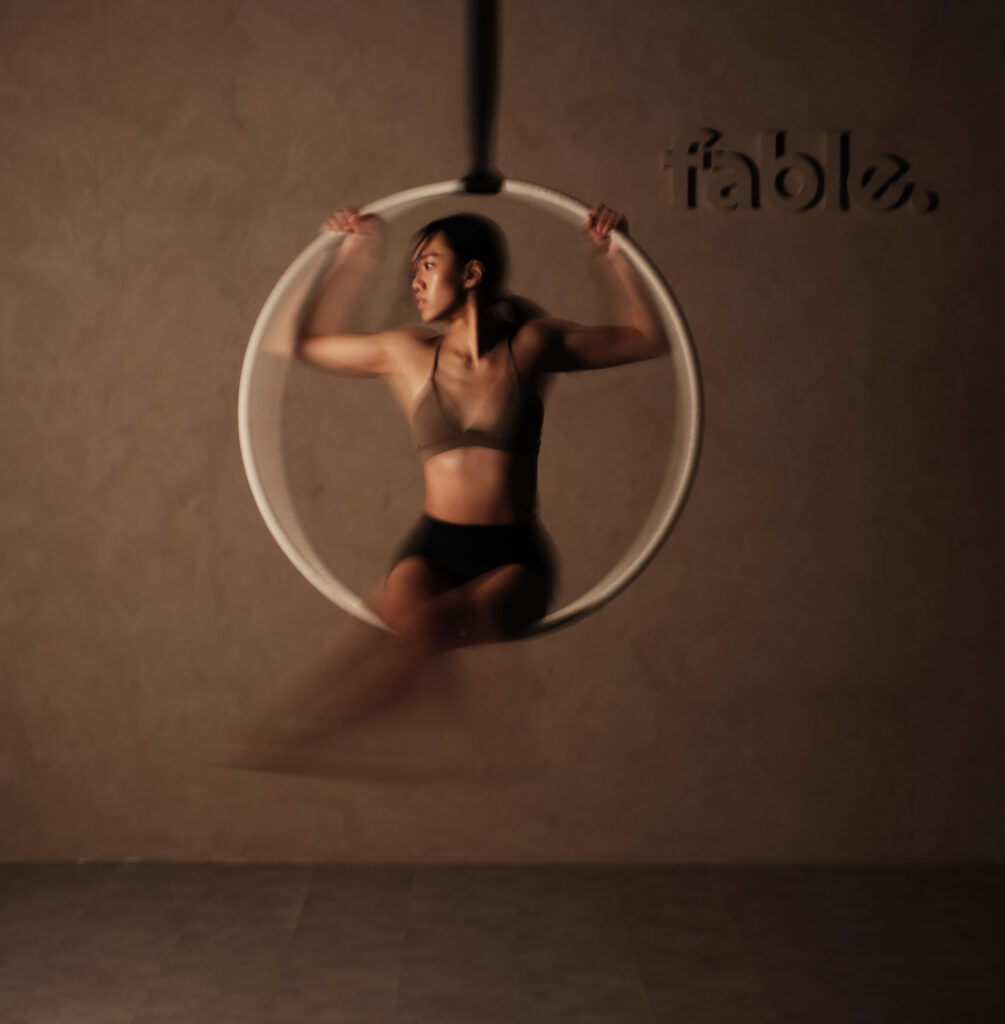
We also shot a video using the Molus G300, which you can see on Cherilyn’s Instagram page (check it out, really – she is amazing).
Final thoughts
The Zhiyun Molus G300 feels well-built, well-designed, and very powerful for its size. It also has some ergonomic improvements over its predecessor, the Molus G200, such as the handle as well as a larger lever on the bracket hinge latch. I can really only think of two possible improvements. The first would be a V-mount battery option, but I honestly don’t know enough about the world of high-powered LEDs to say for sure if that is a feasible option for a light like this (perhaps some more knowledgeable readers can enlighten me). The other improvement would be a carrying case, like with the Molus G200. The G300 comes in a cardboard box with a handle, and foam inserts to hold the light and accessories. The box is fine for packaging purposes, but for carrying the light around to photoshoots and such, I have been using other bags as the cardboard doesn’t feel secure enough, especially if it rains.

But overall, the Molus G300 does what it’s supposed to do, and does it extremely well. There are competing products with all-metal build and weather-proofing, but those tend to be a lot bigger, heavier and more expensive. Because the Molus G300 needs to be plugged in, it’s not the most convenient light for shooting outdoors on location – but that’s not really what it’s designed for anyway. Where it really shines is in a studio or similar setup – it’s small size makes it unobtrusive, while its power and adjustable colour temperature provide a lot of flexibility. For most still photographers, the Molus G300 is probably more power than we need. But if you do need this level of power – either for video or for specialized still photography applications – this is one of the most (possibly the most) compact and inexpensive light in its class.
Thanks for reading. For more of my work, feel free to check out my Instagram.
Purchase links:
- Zhiyun official store (affiliate link)
- Amazon (non-affiliate link)
10% off promo code (valid for both websites): ZHIYUN10WSS
Share this post:
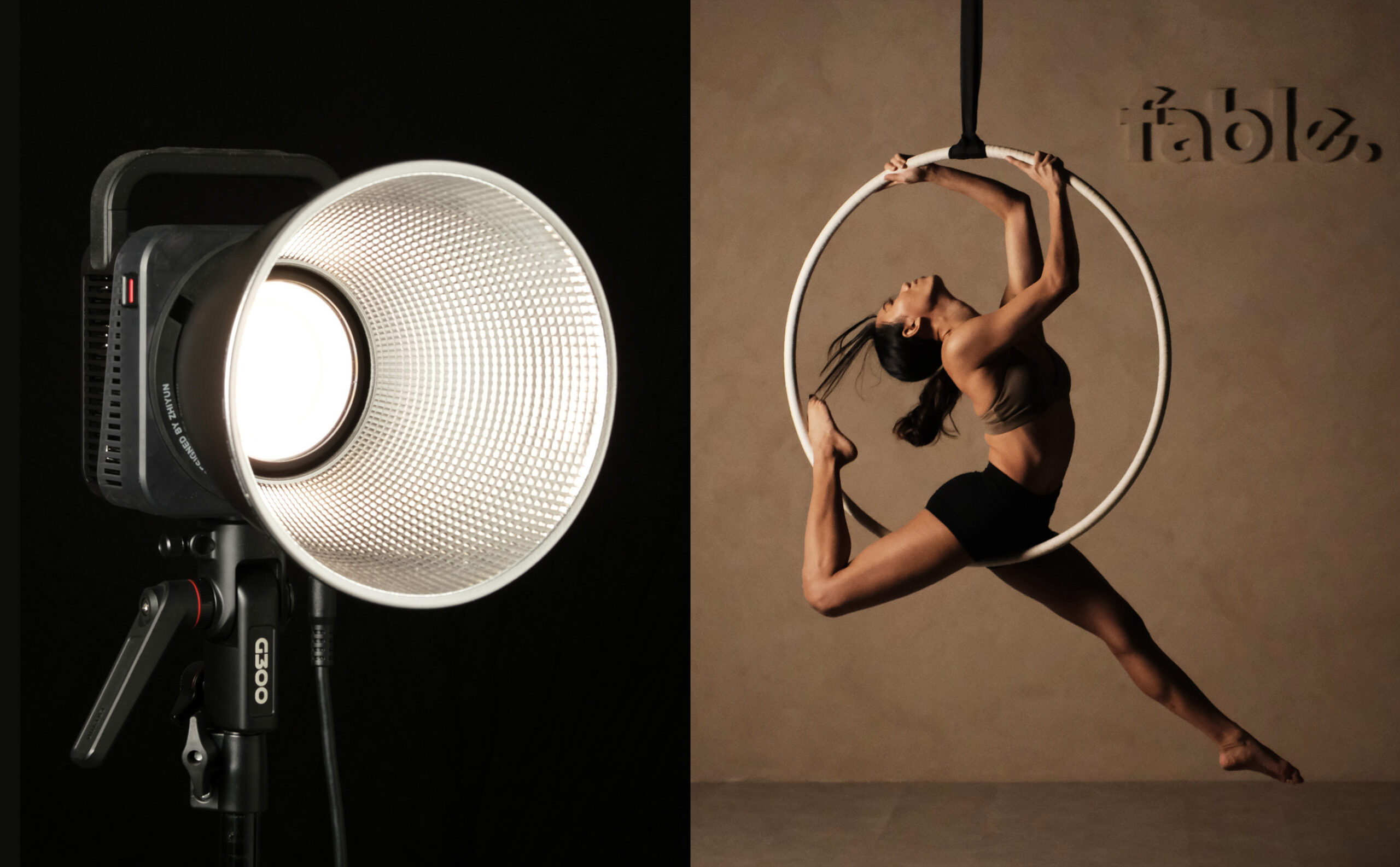
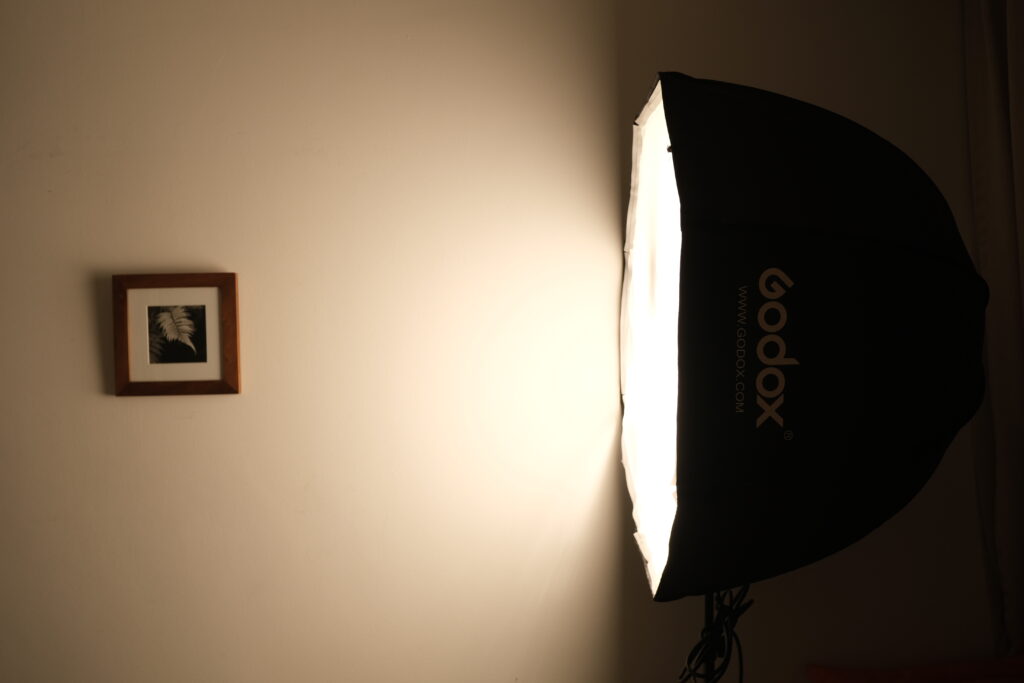
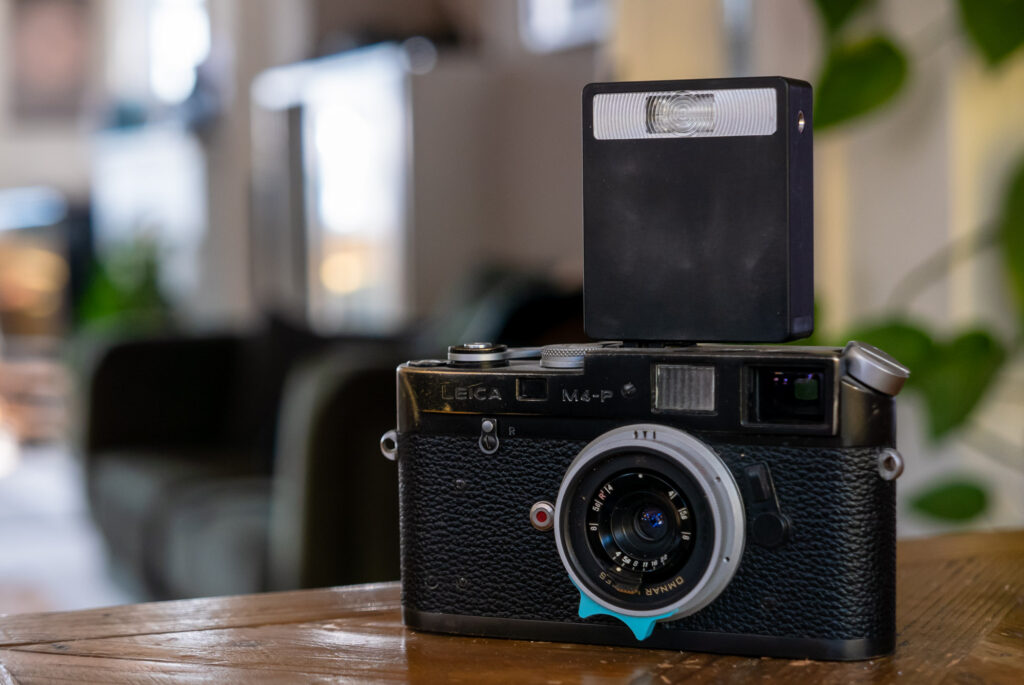
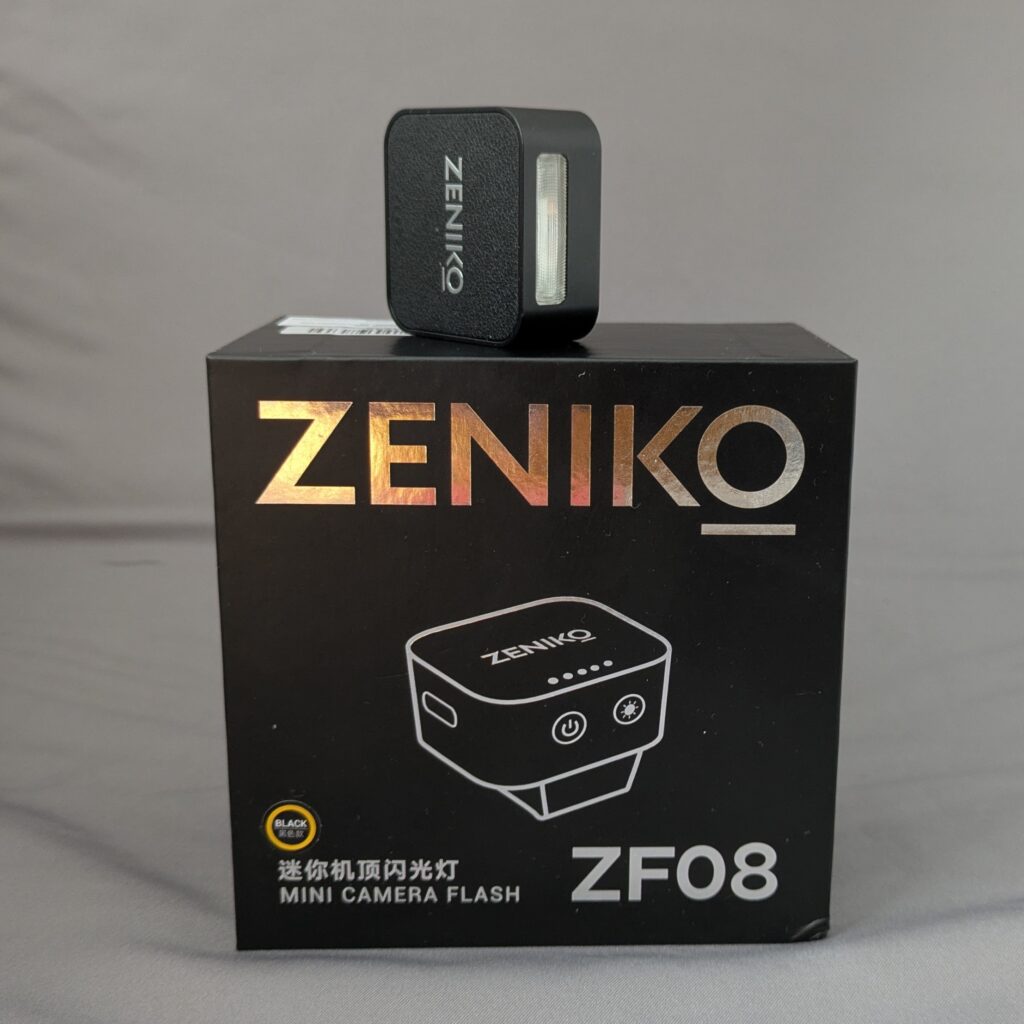
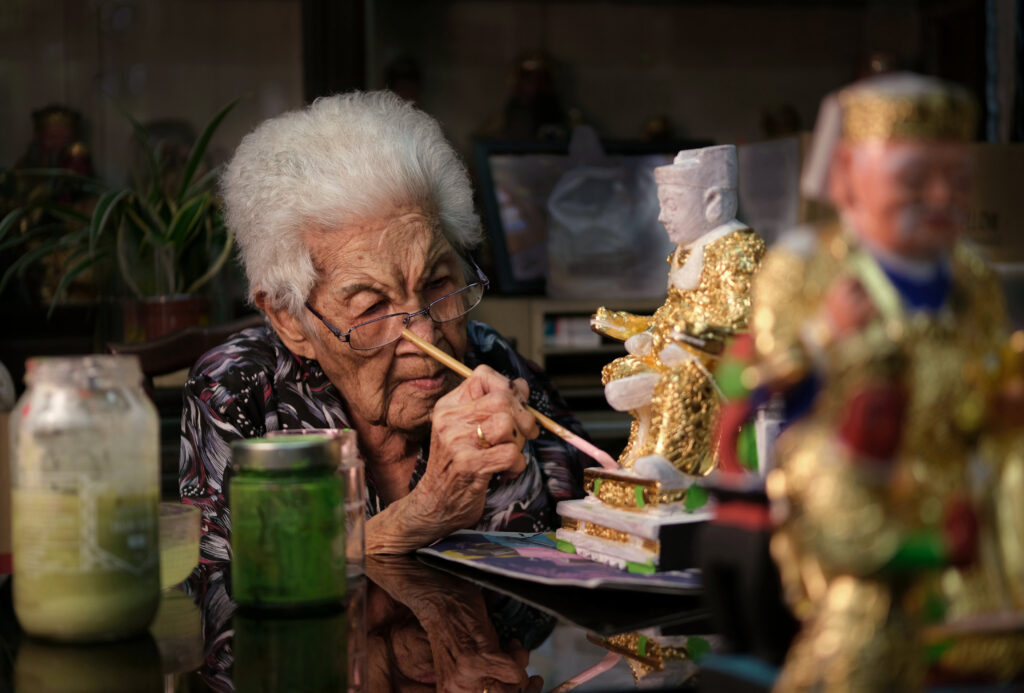
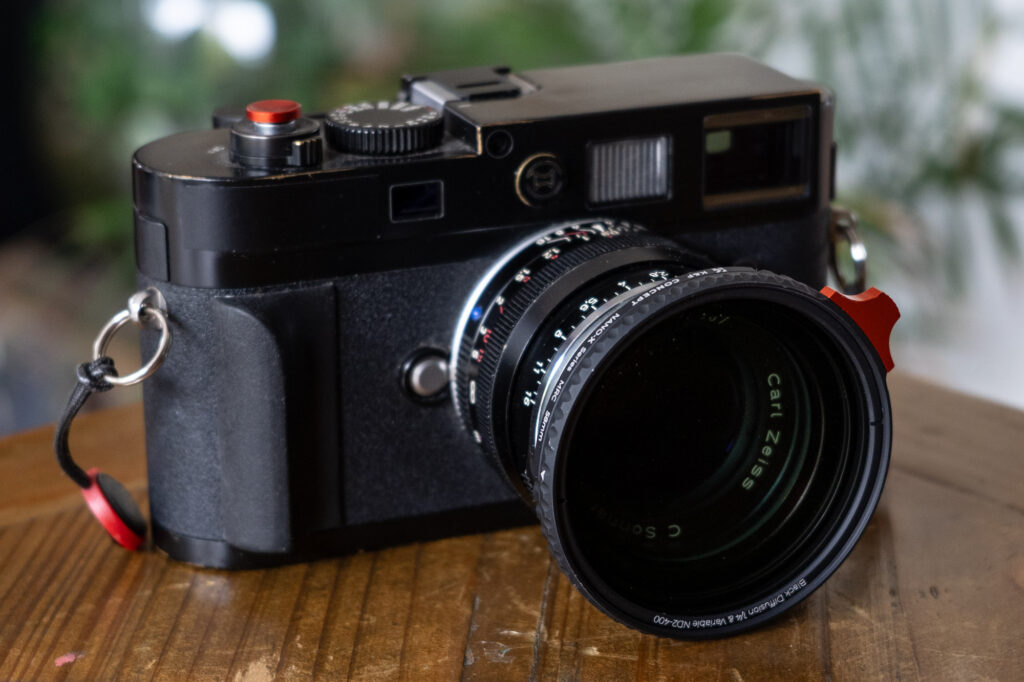




Comments
Gary Smith on Zhiyun Molus G300 Review – Incredibly Compact and Bright LED Light
Comment posted: 02/09/2024
Comment posted: 02/09/2024
Jeffery Luhn on Zhiyun Molus G300 Review – Incredibly Compact and Bright LED Light
Comment posted: 04/09/2024
Continuous lights are good. While I still have a big inventory of Arri and Mole Richardson lights, I've gone to LED and CFL for video and some still applications. Modern LEDS are great with their Kelvin output control.
For comparisons, what is the lumen output at 10 feet? What is the decibel reading of the fan at 3 feet? I'm skeptical about using lights with fans for an interview situation.
Comment posted: 04/09/2024
Comment posted: 04/09/2024